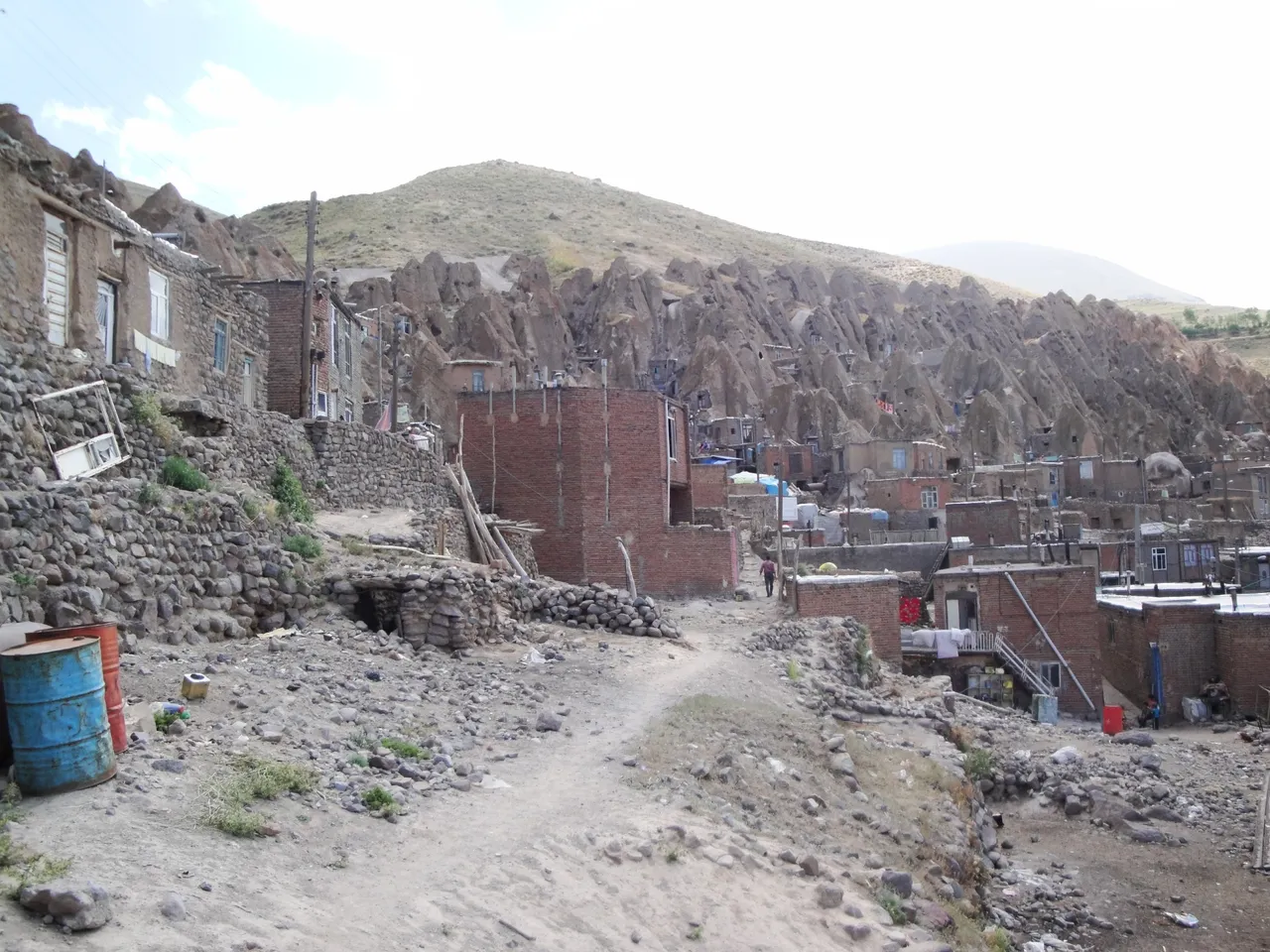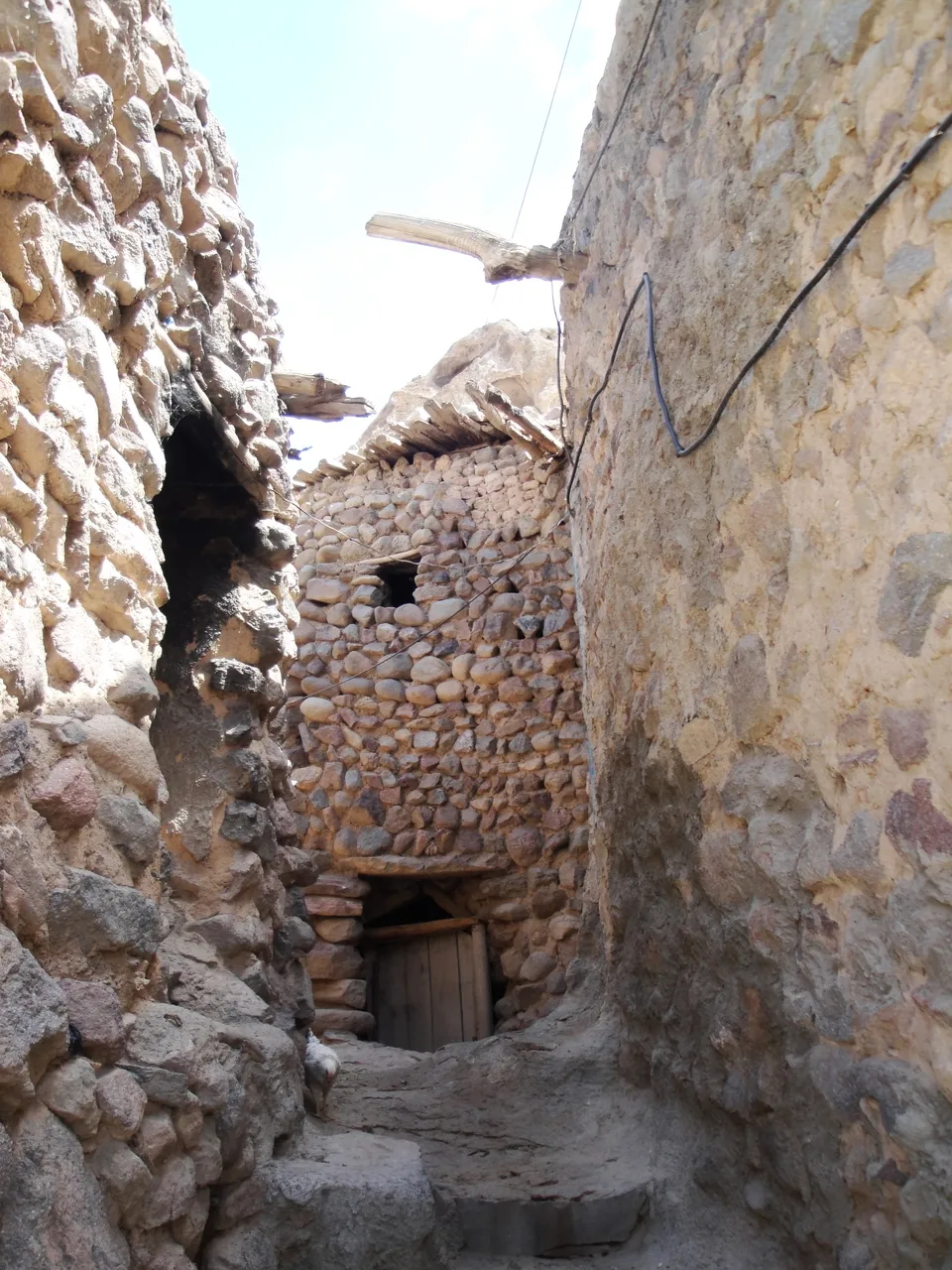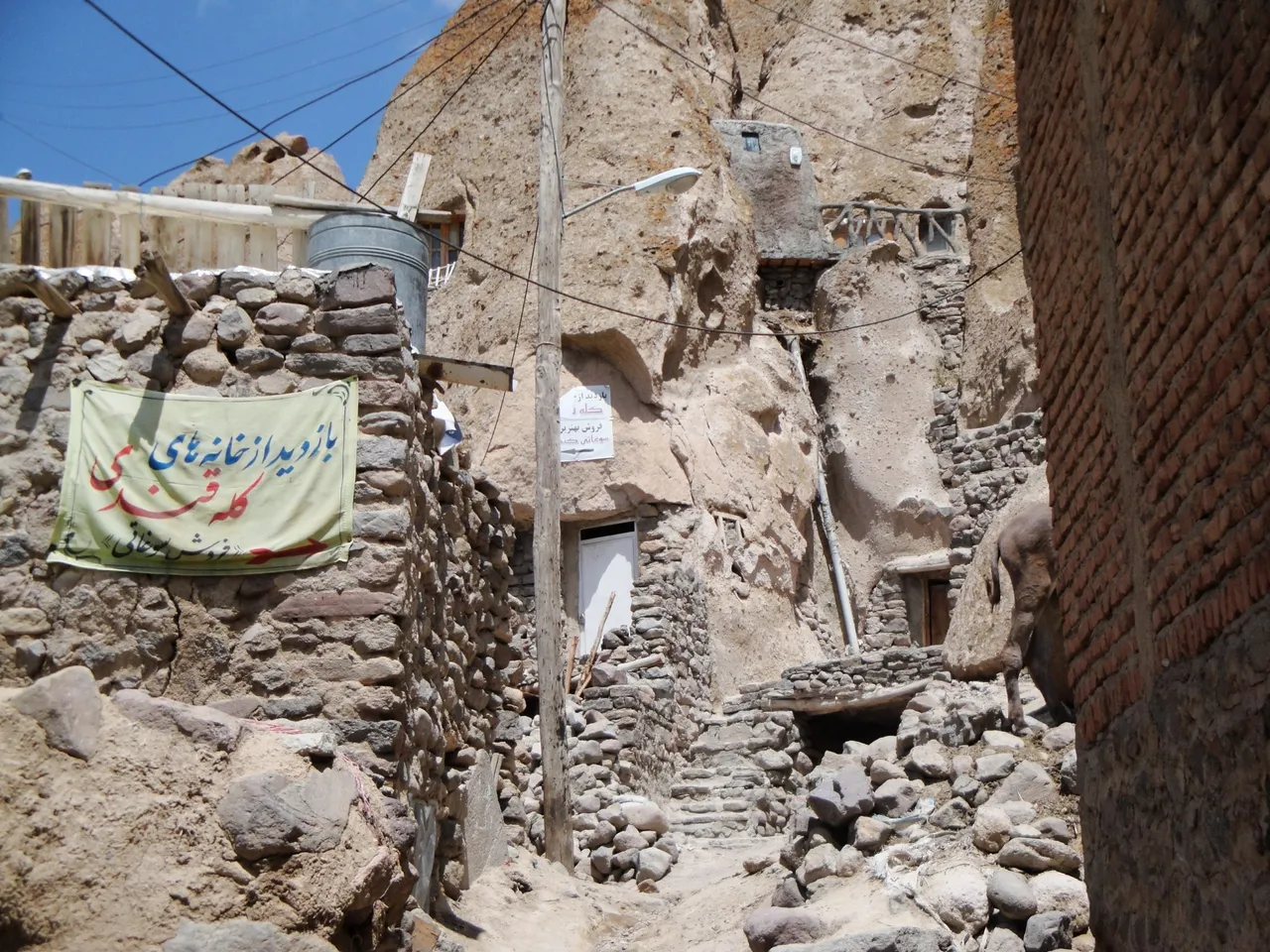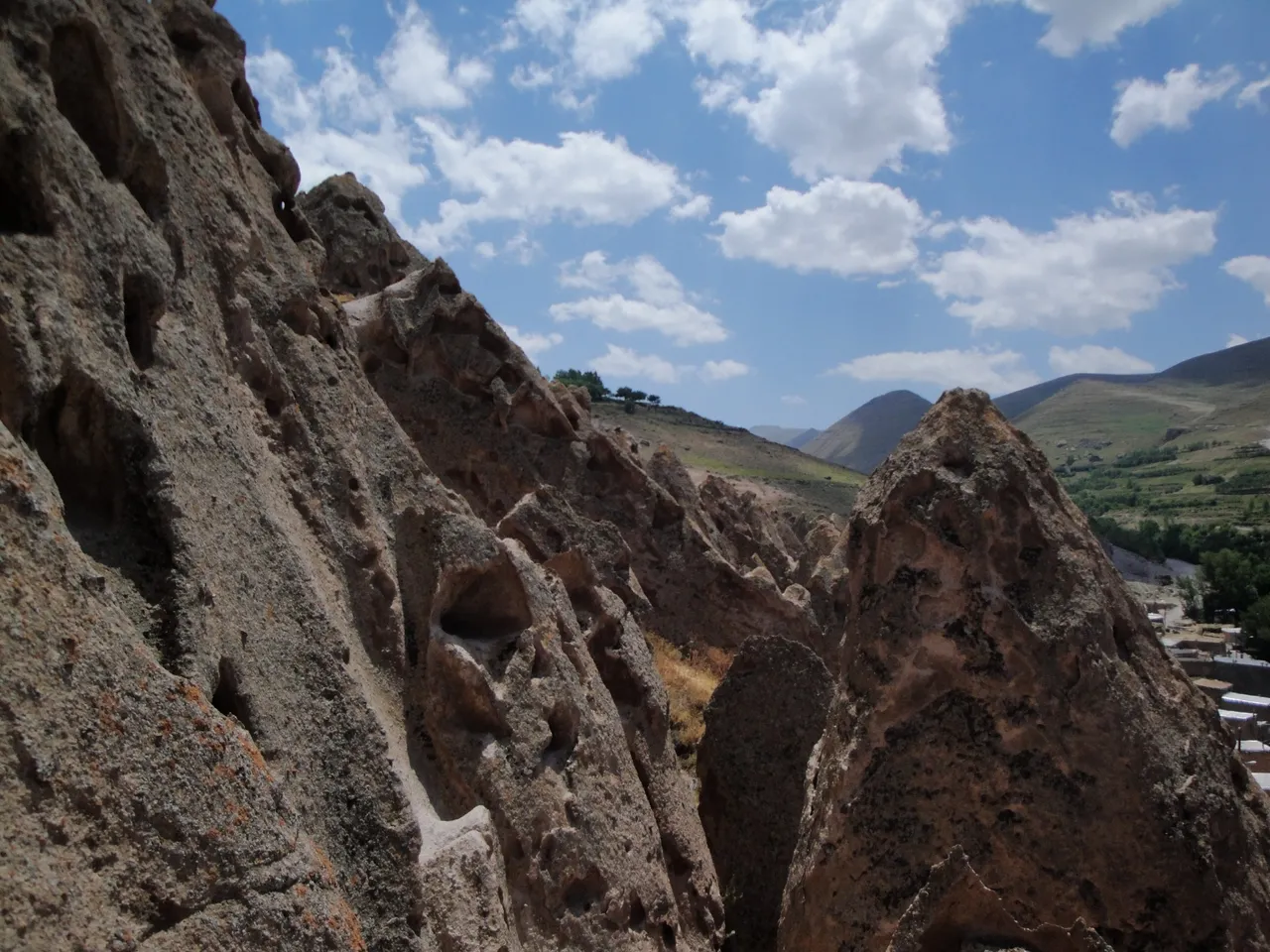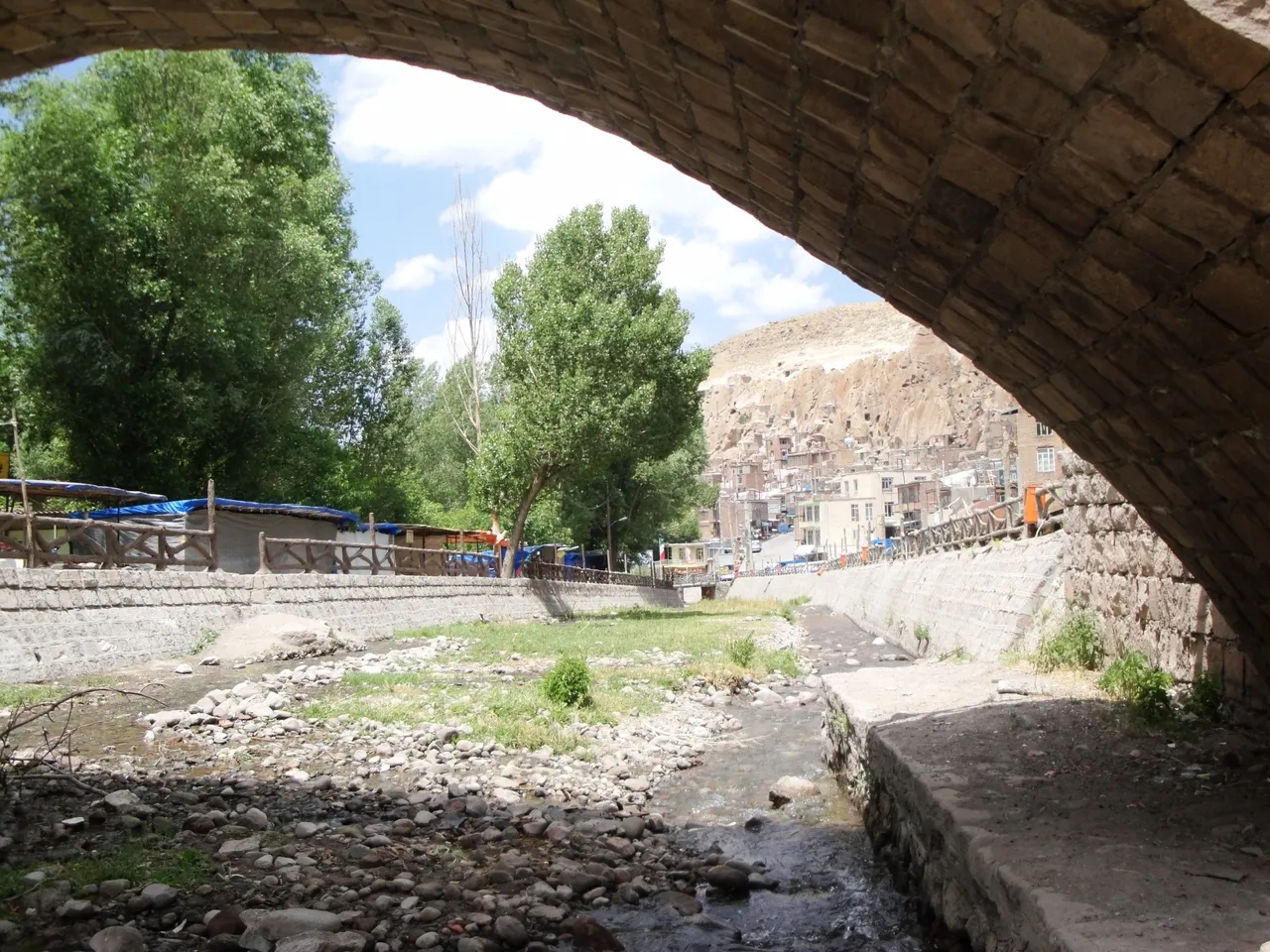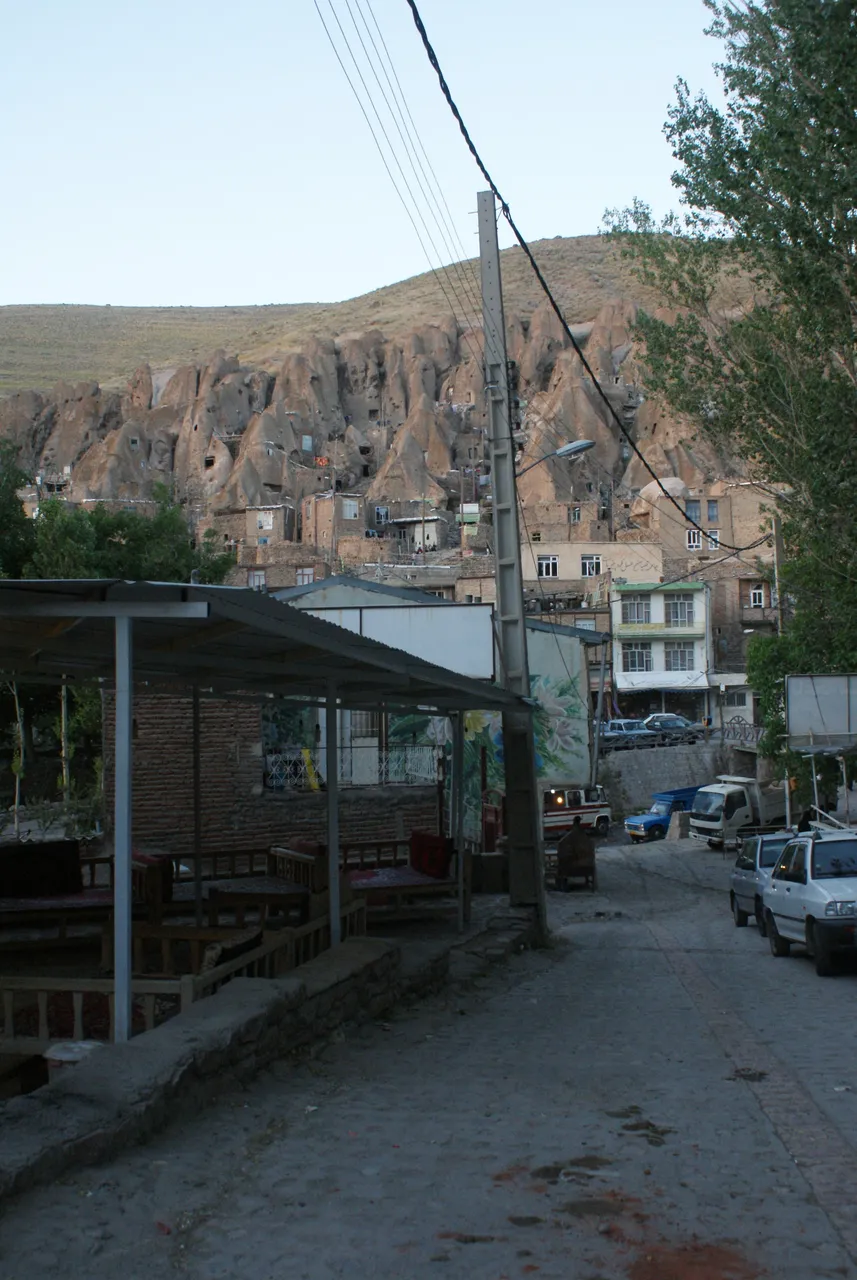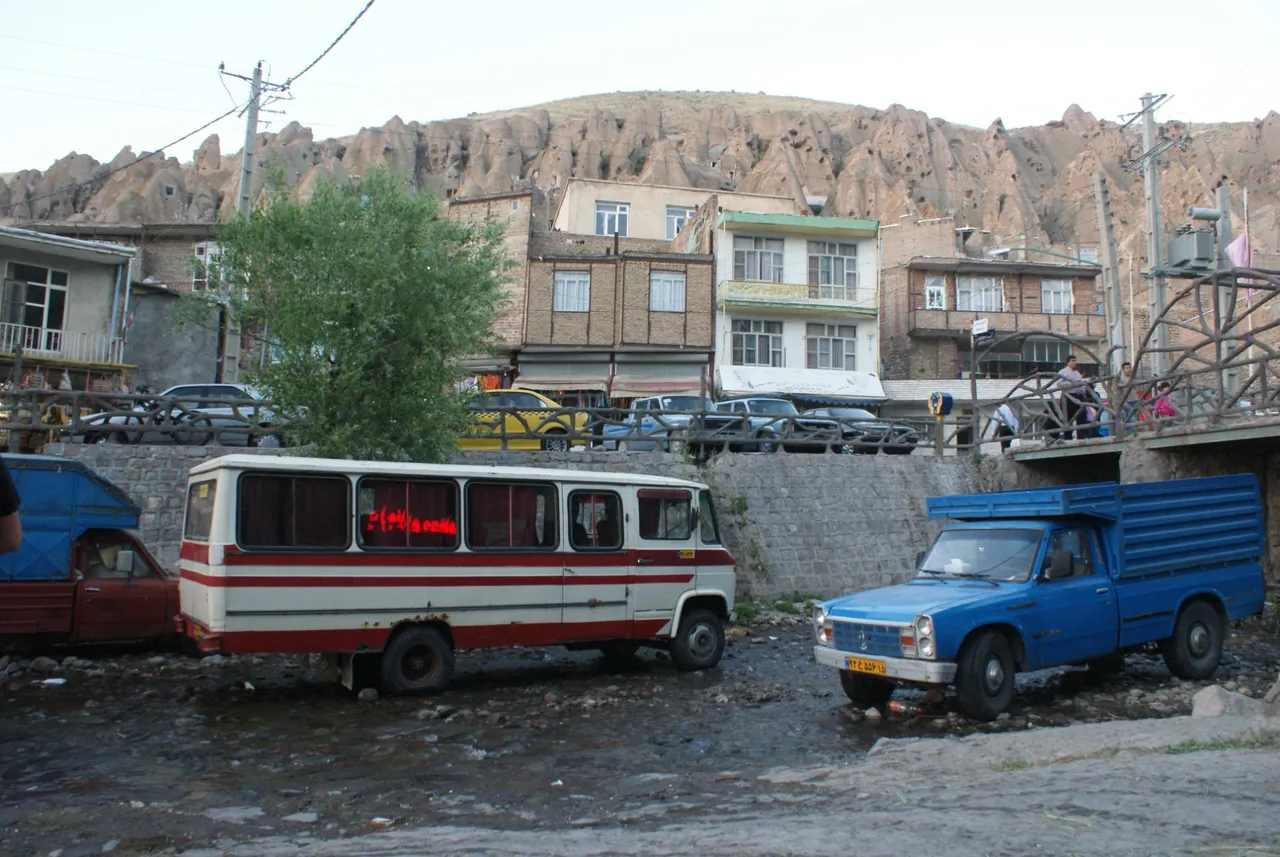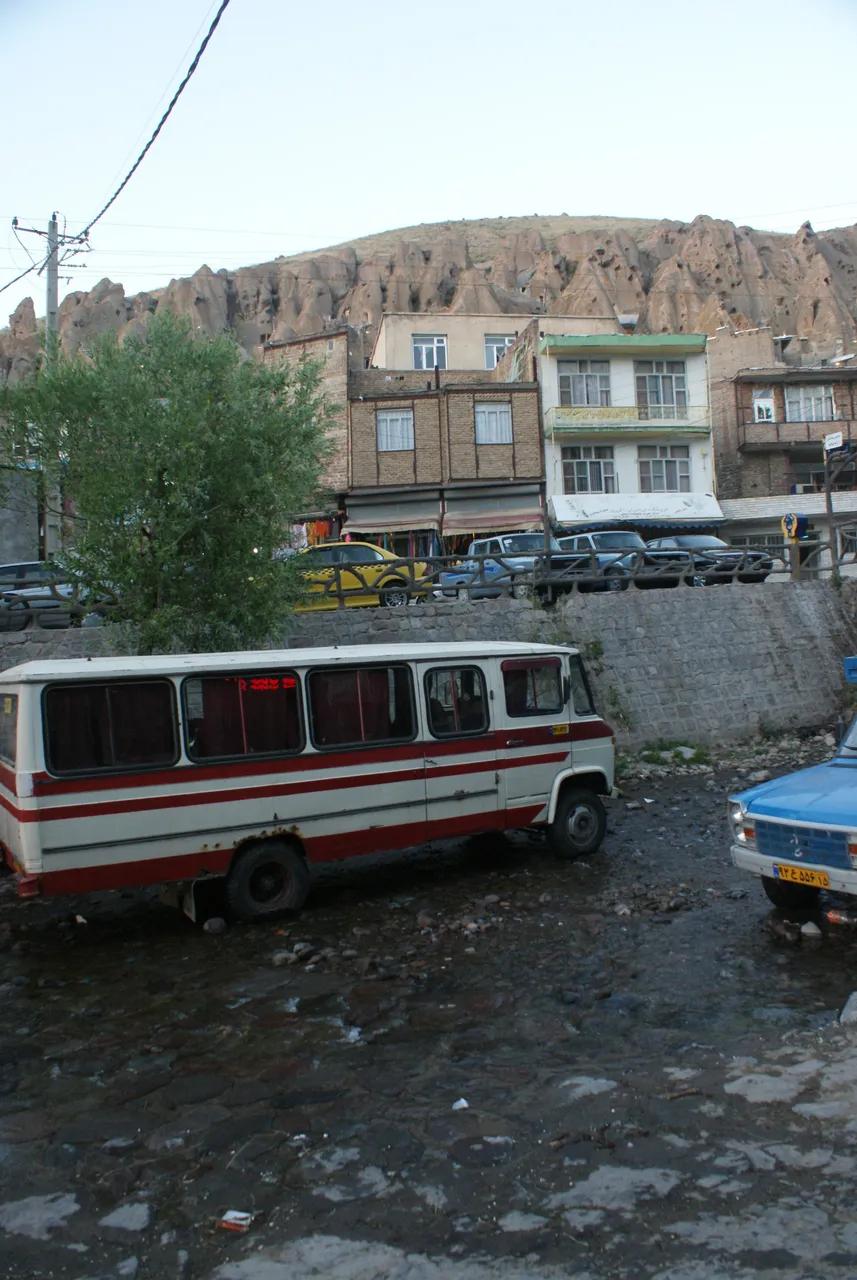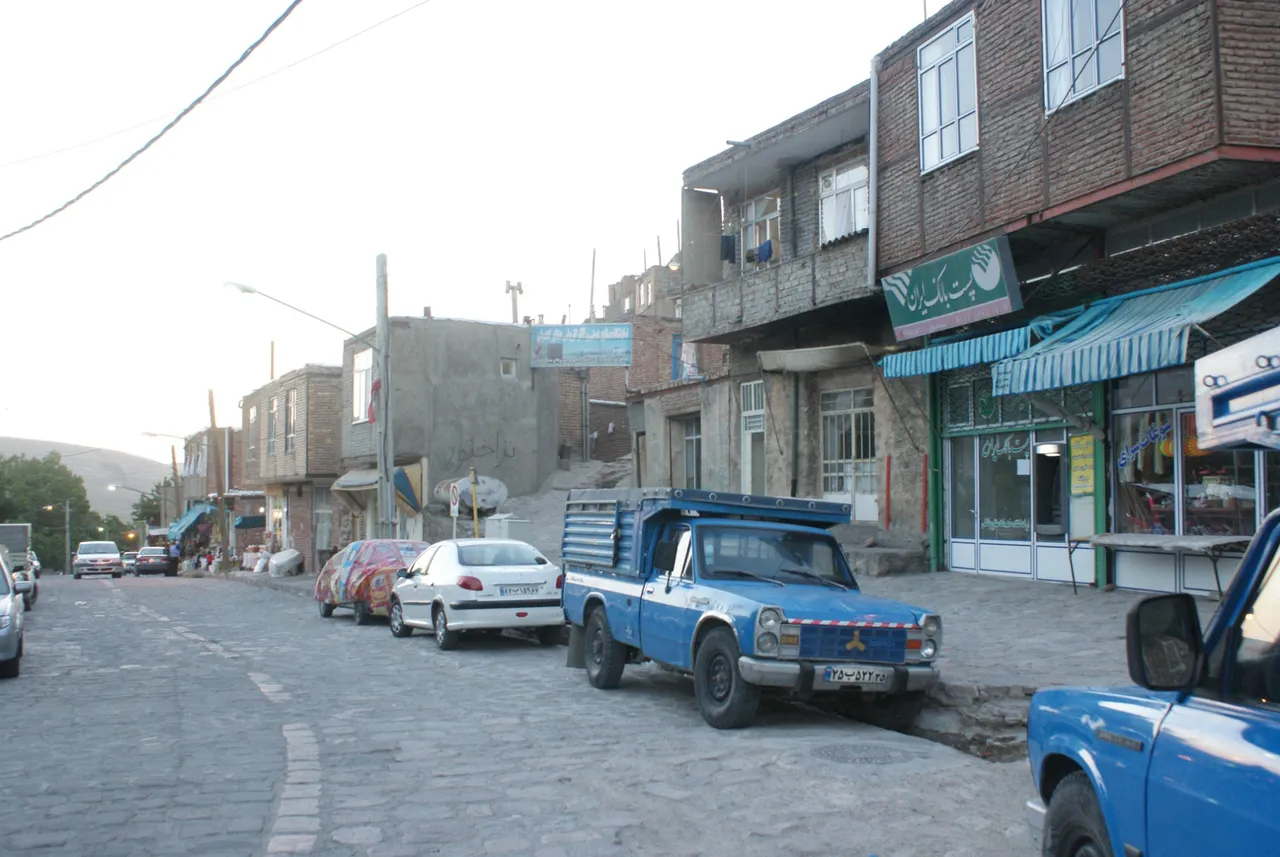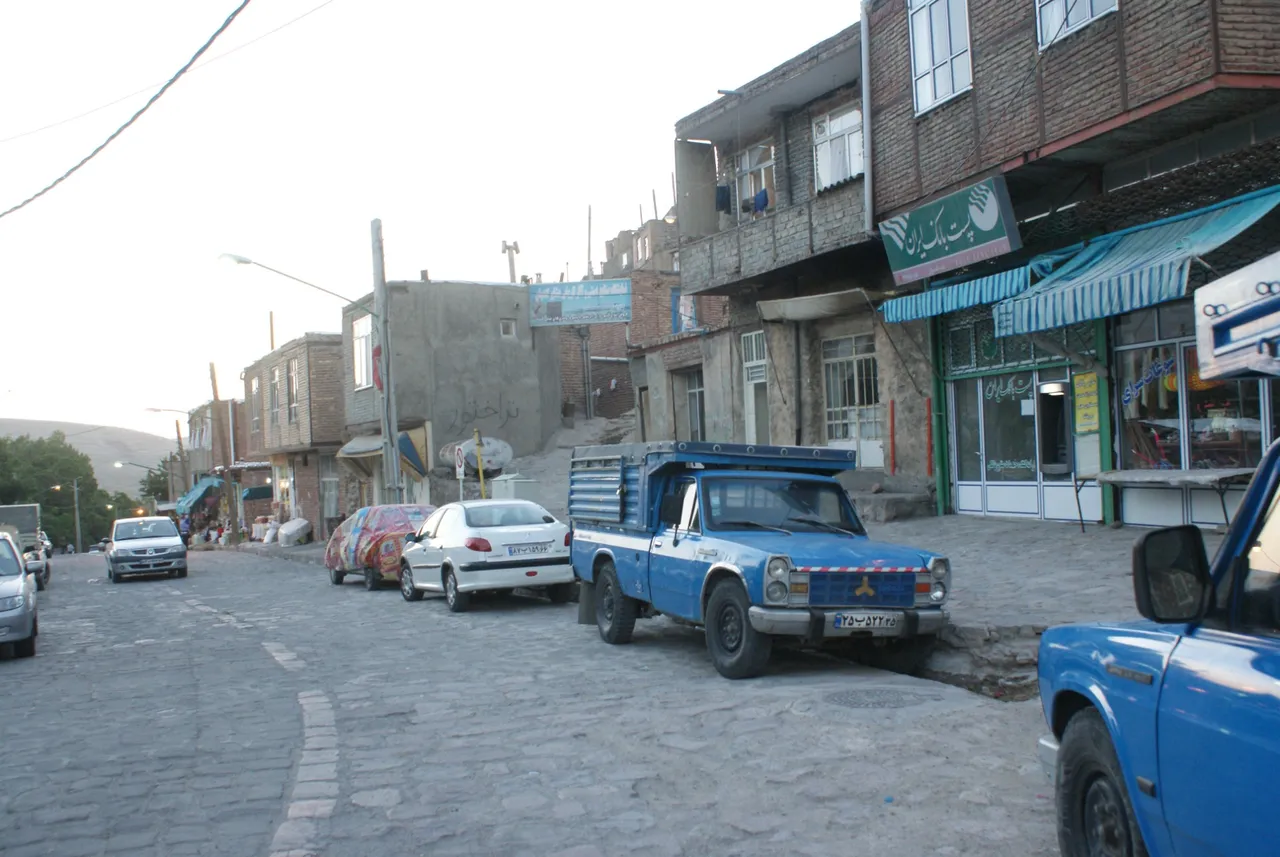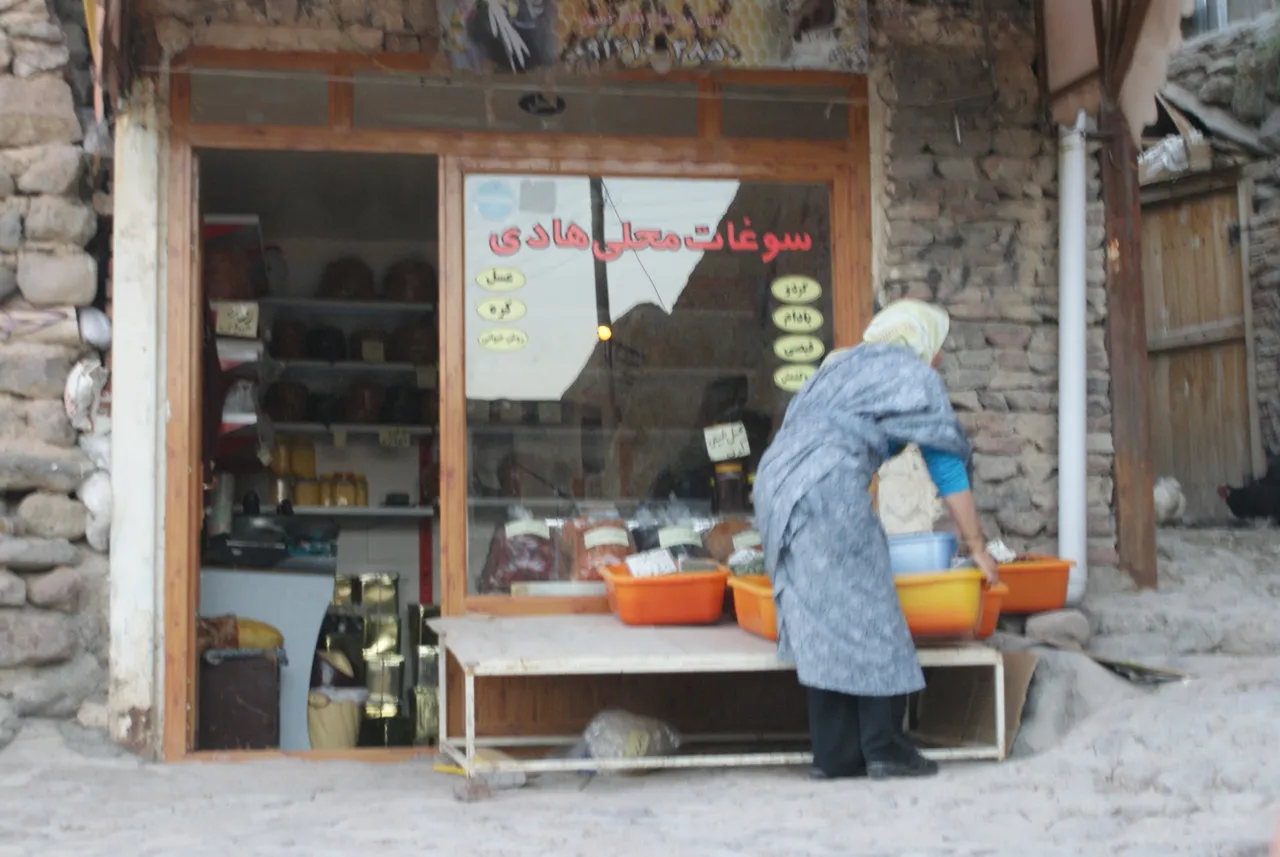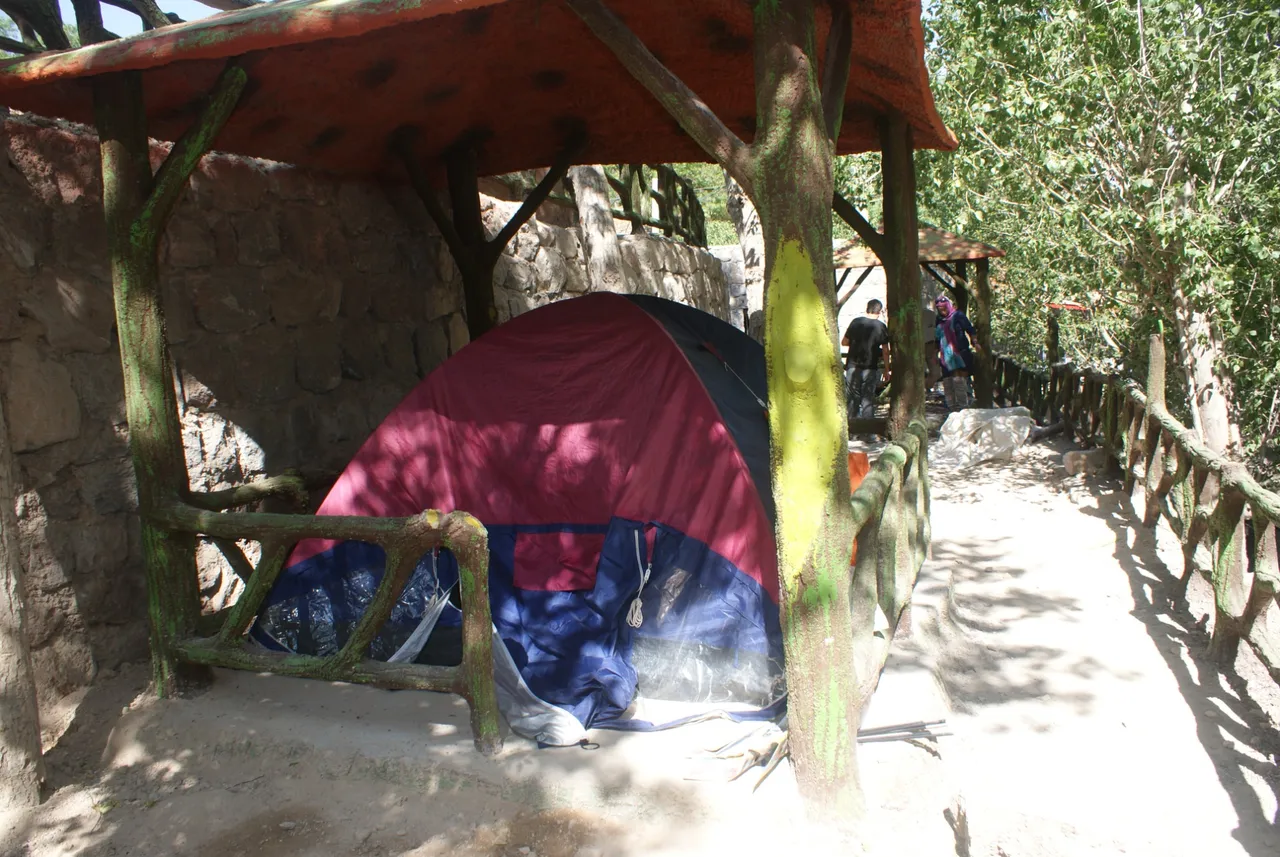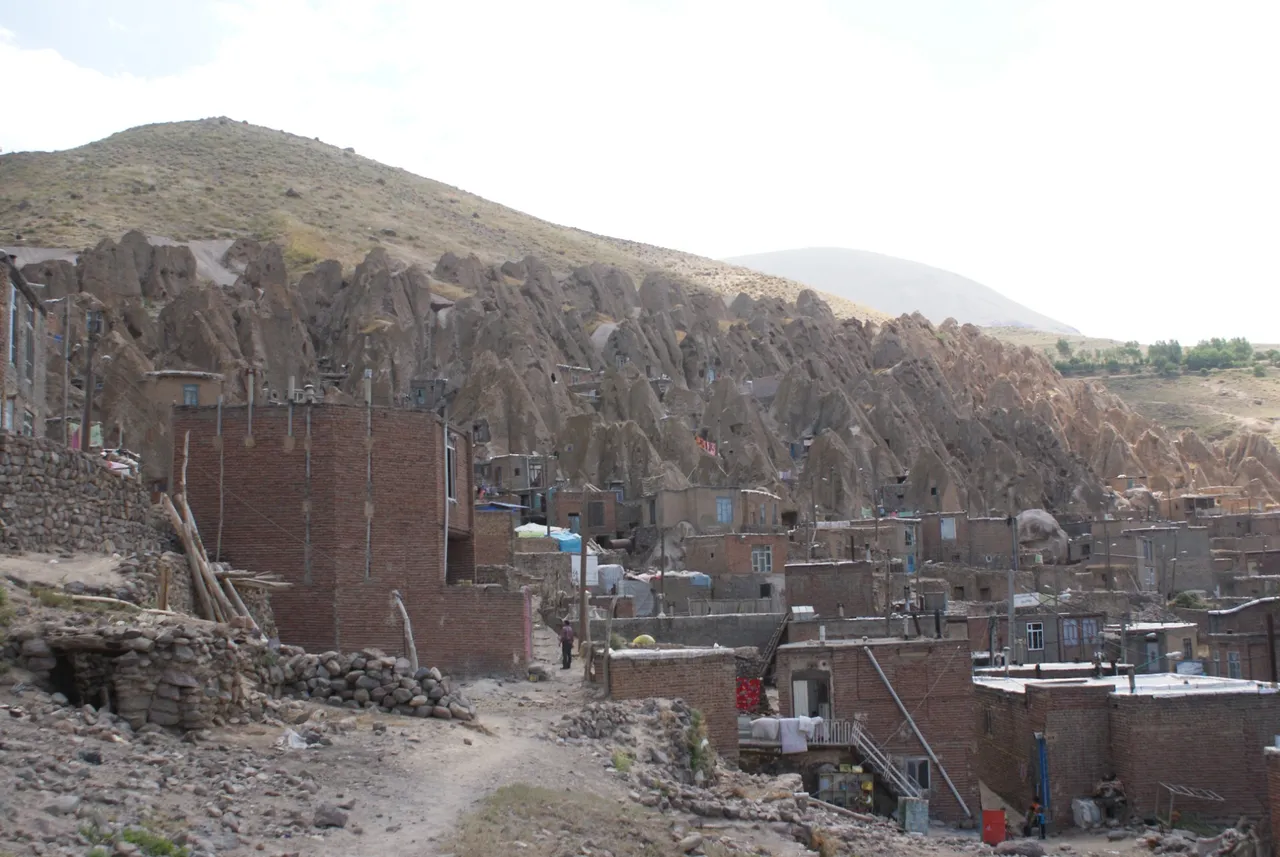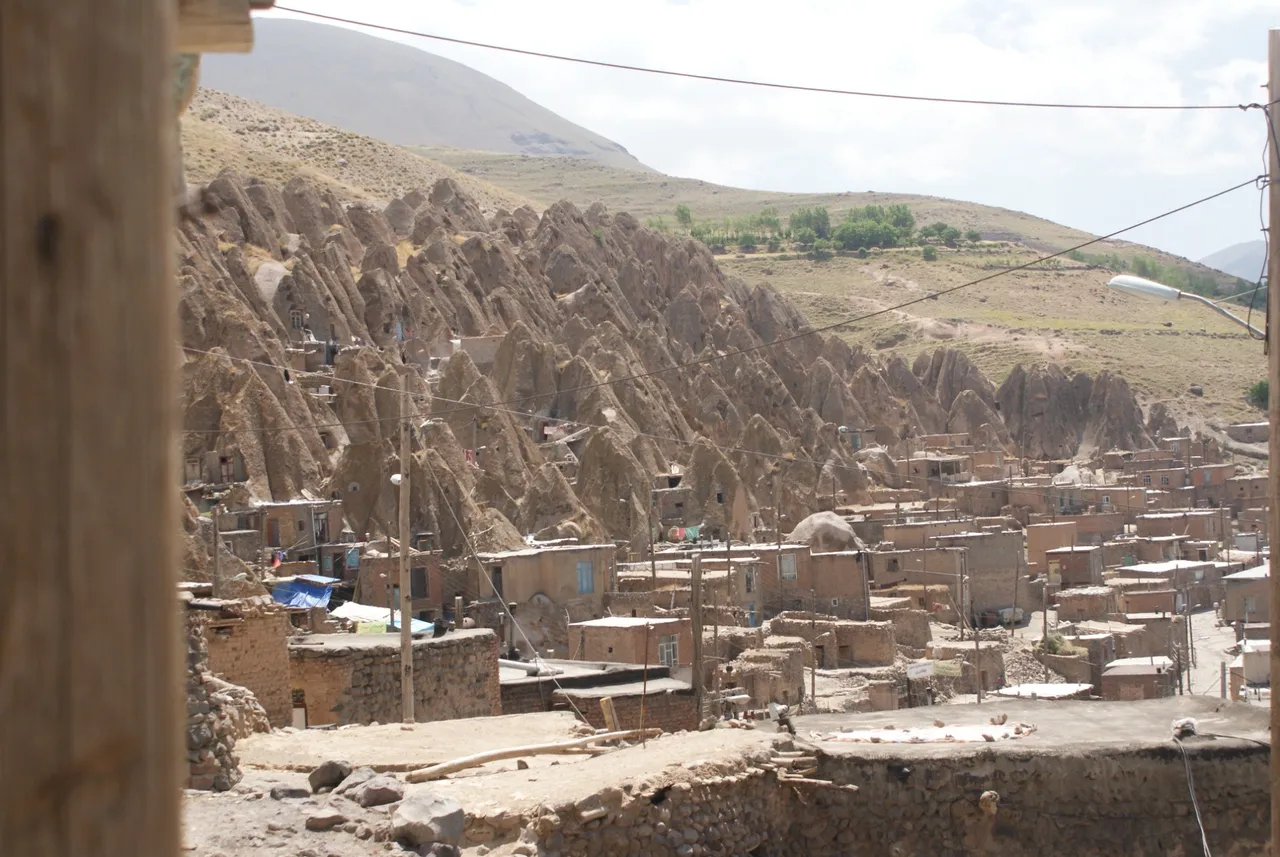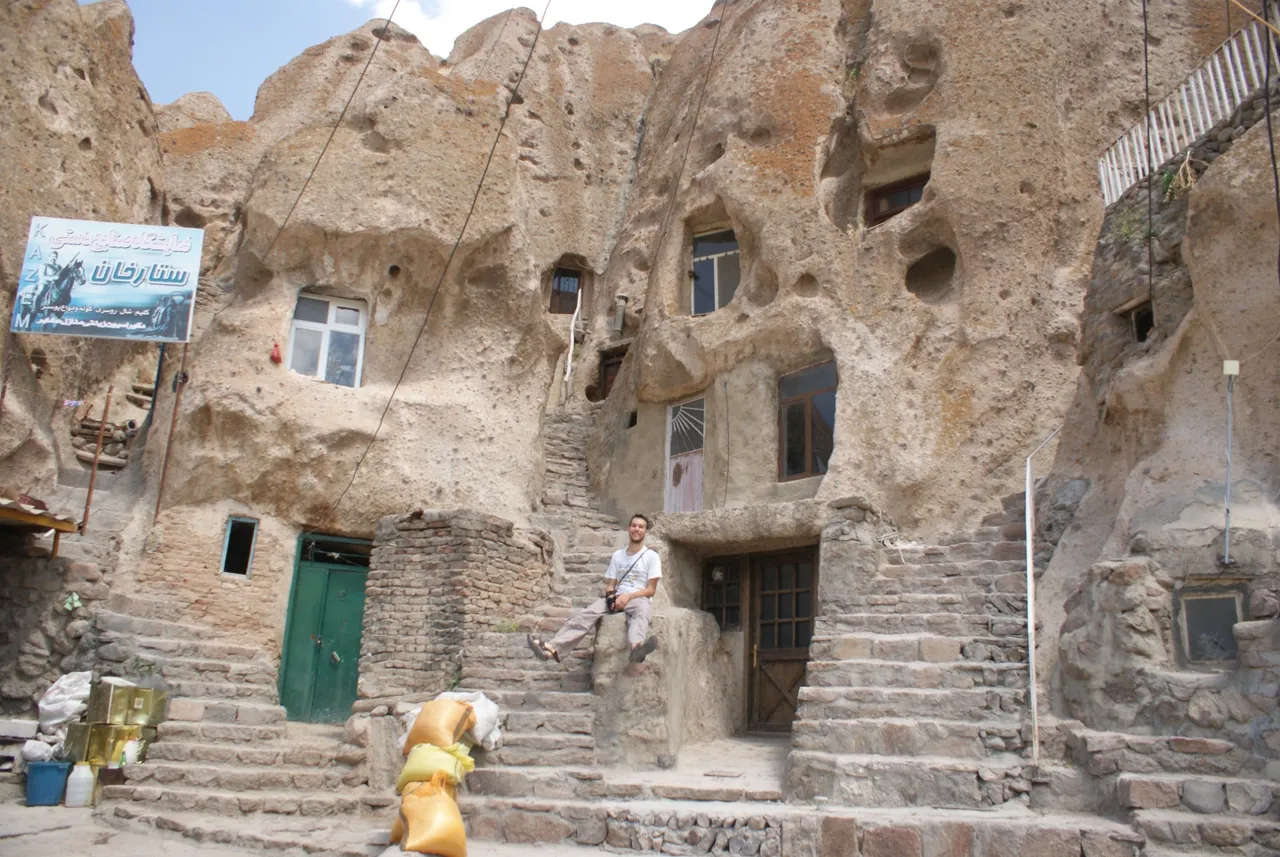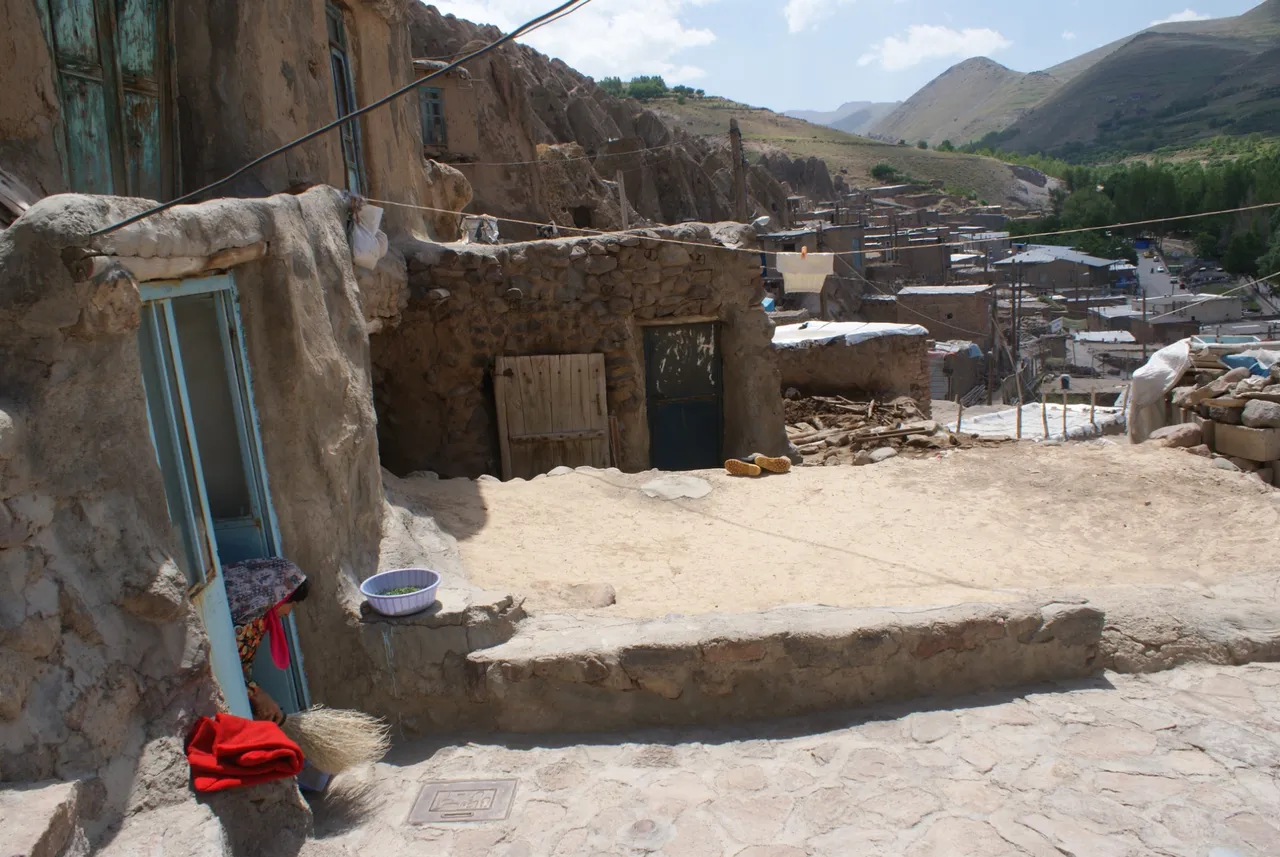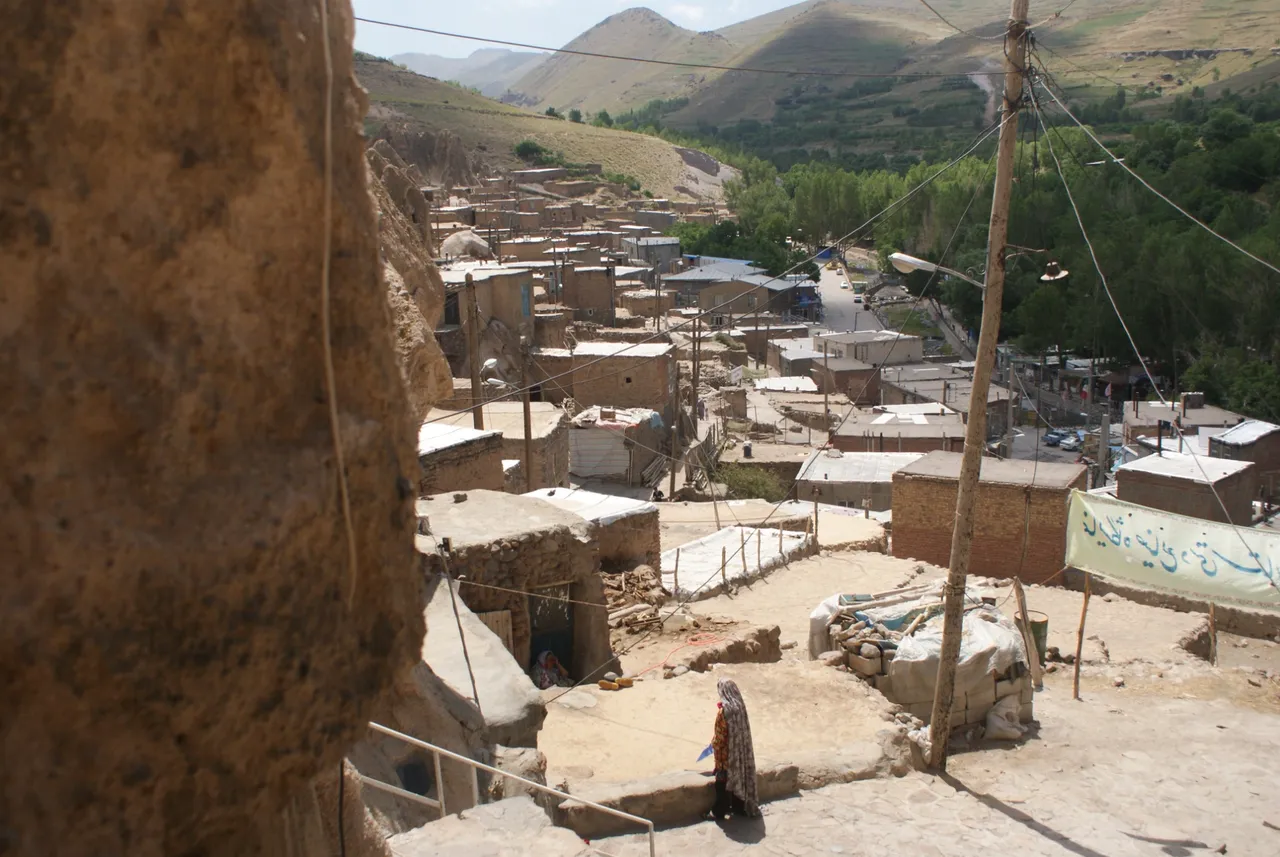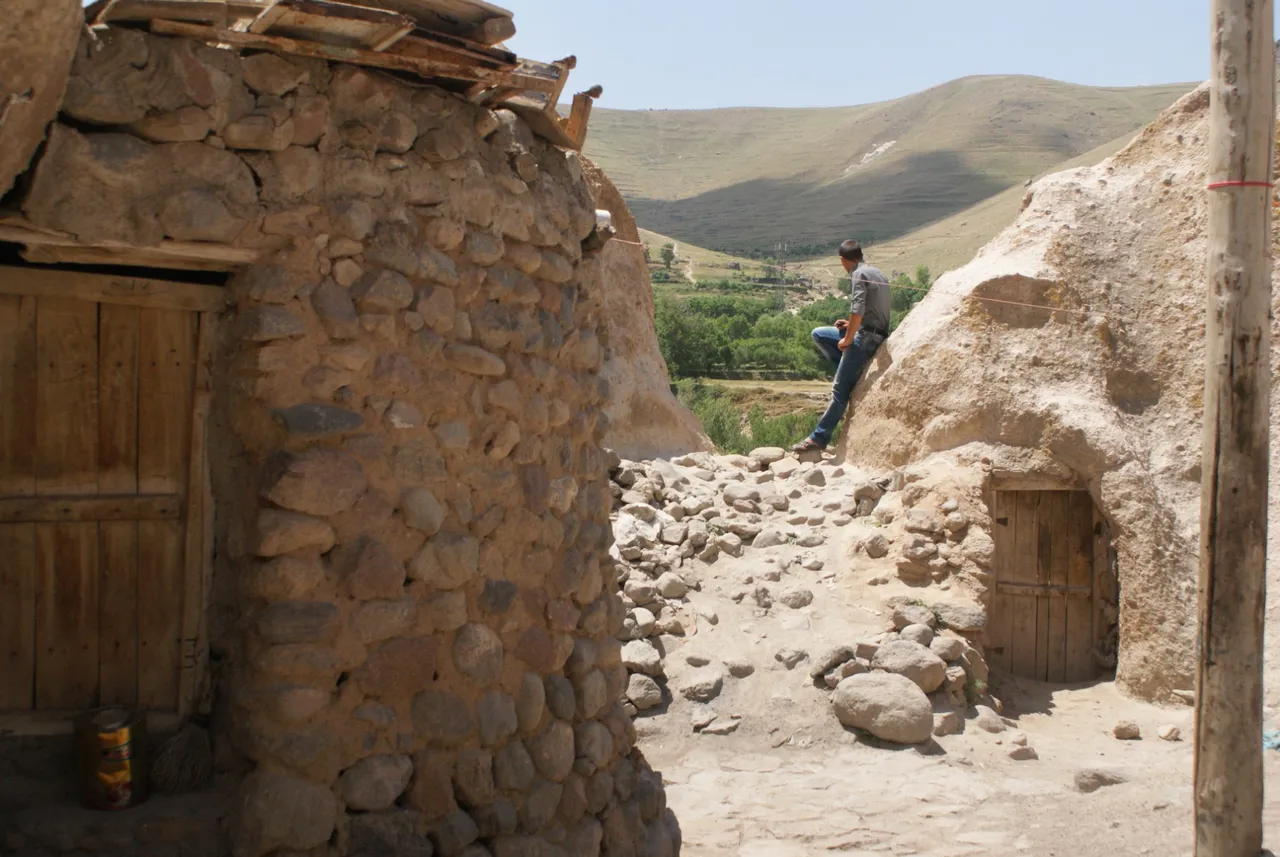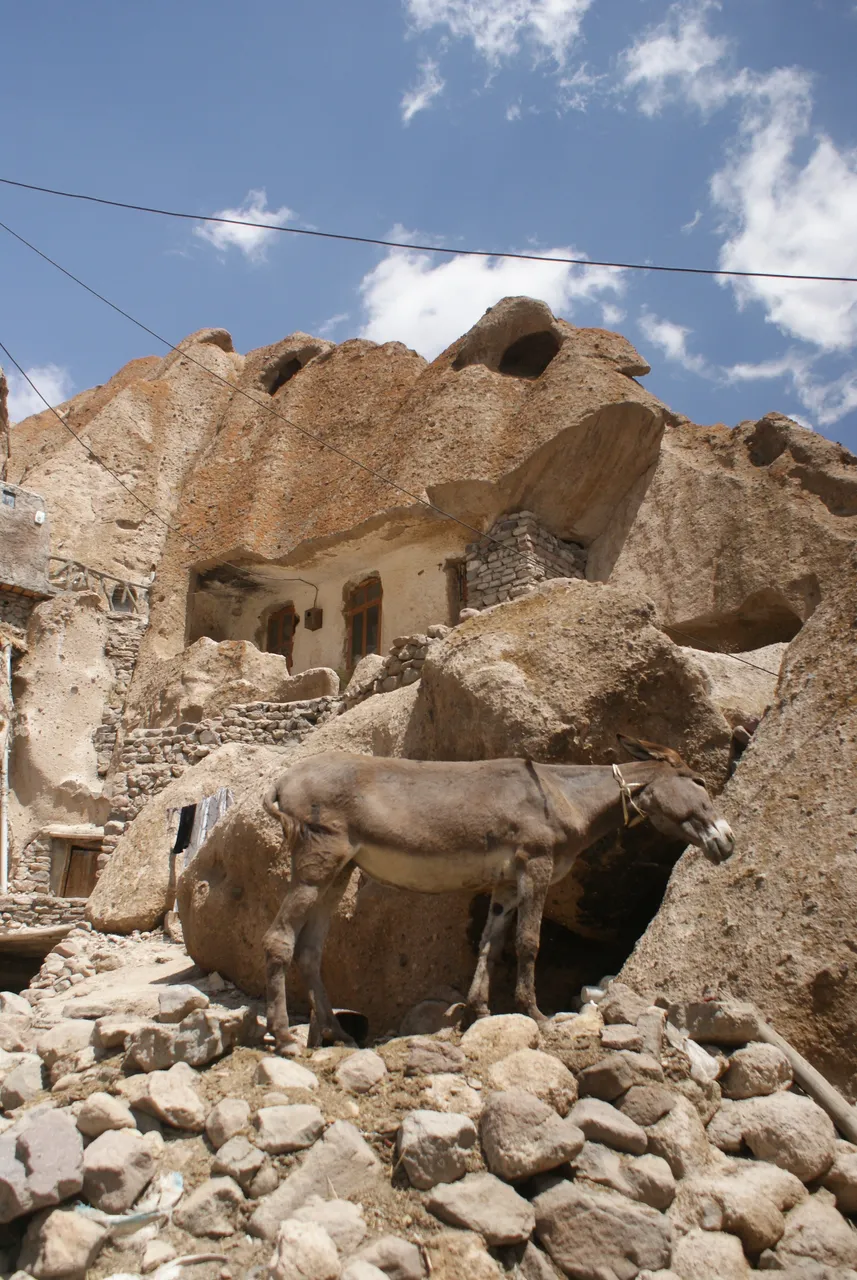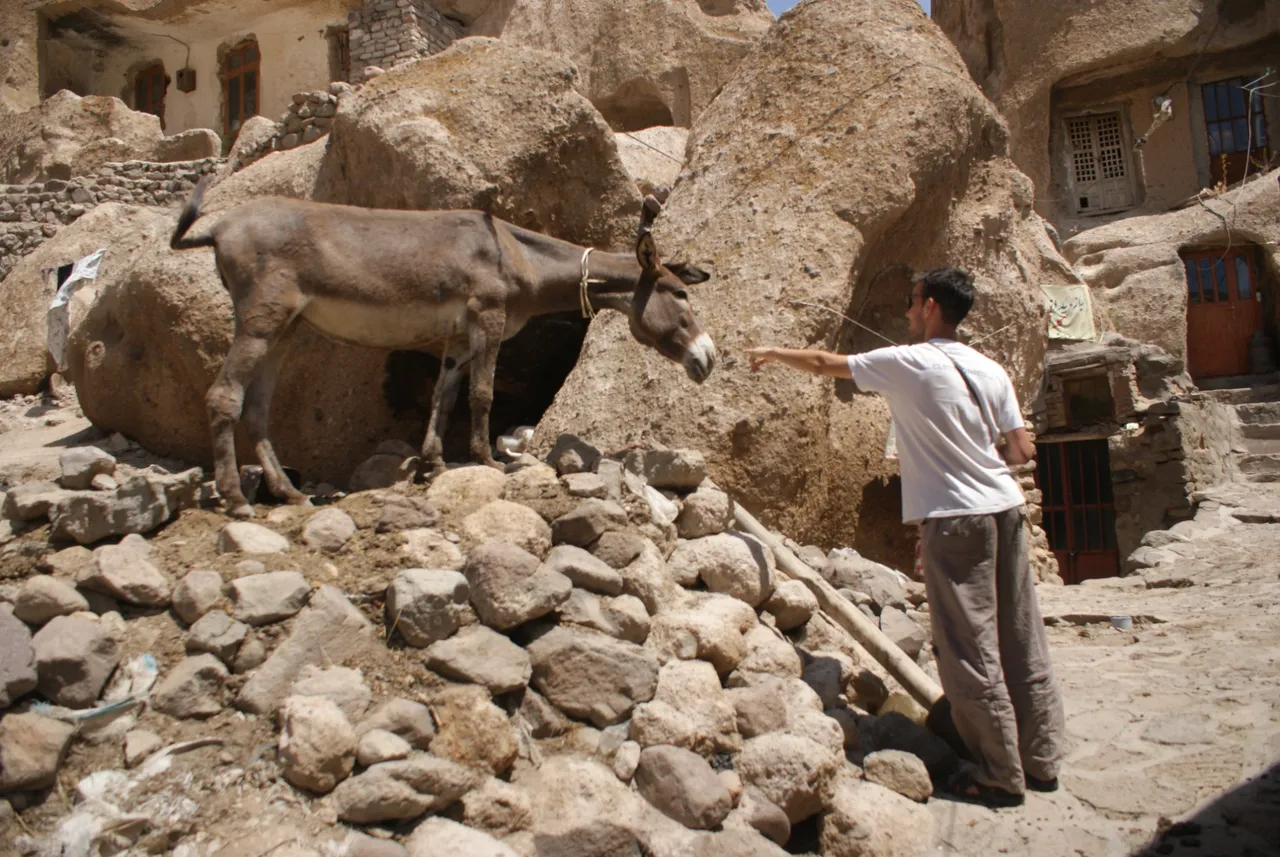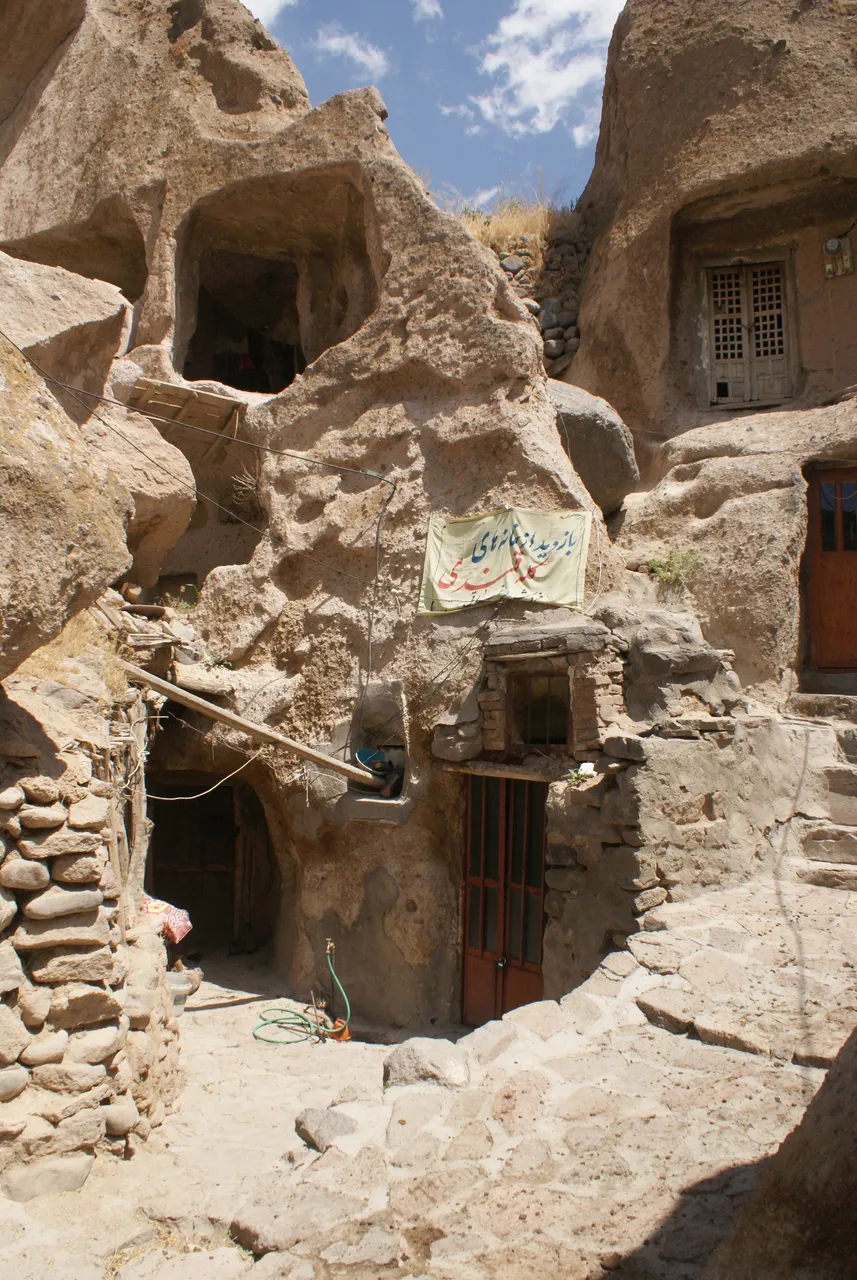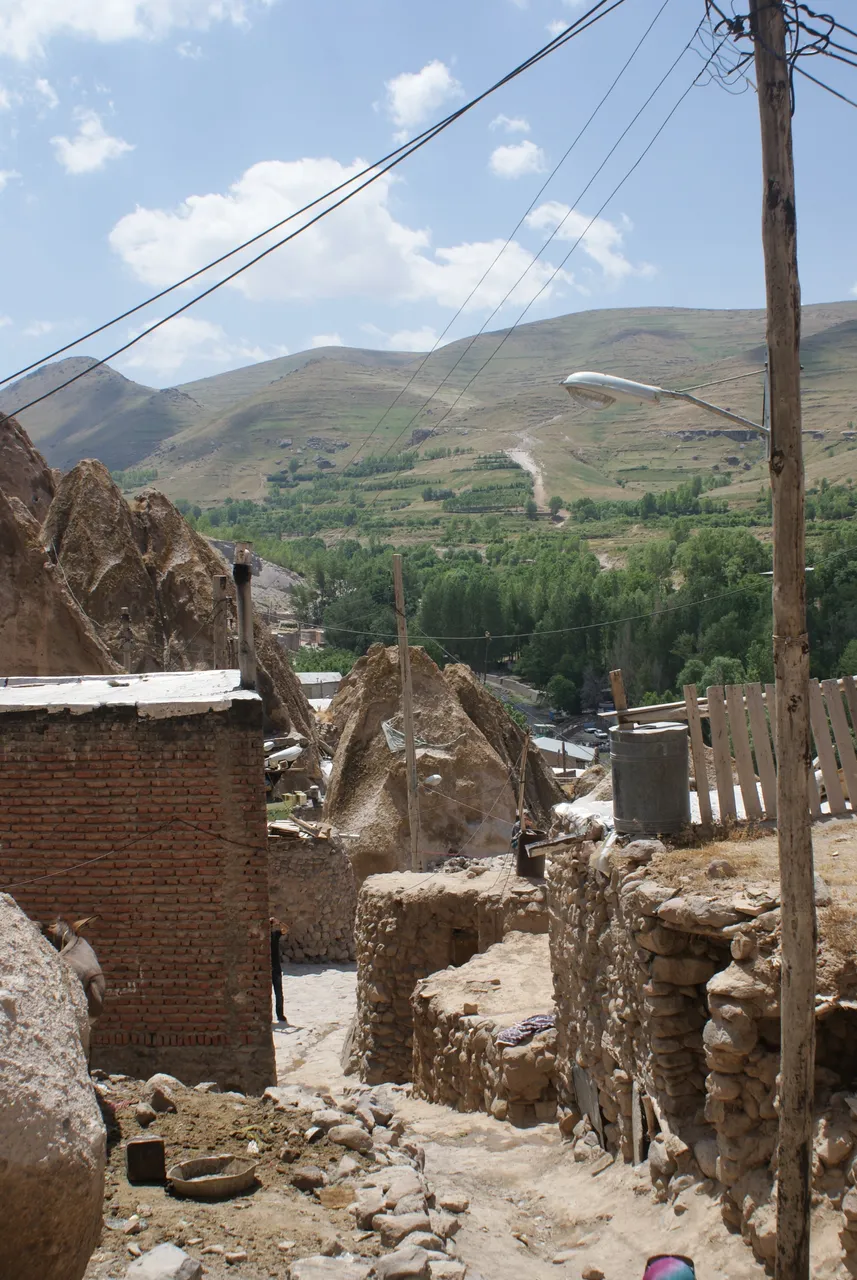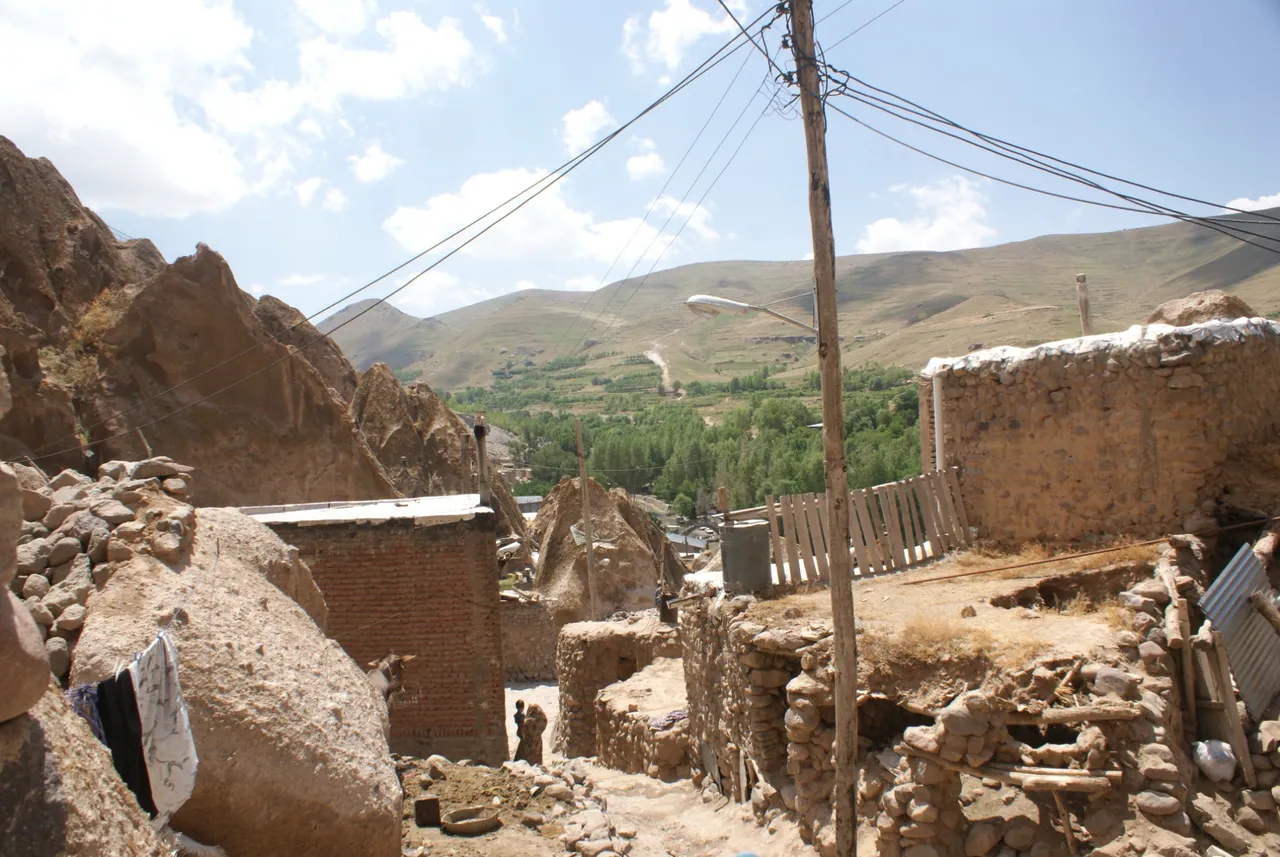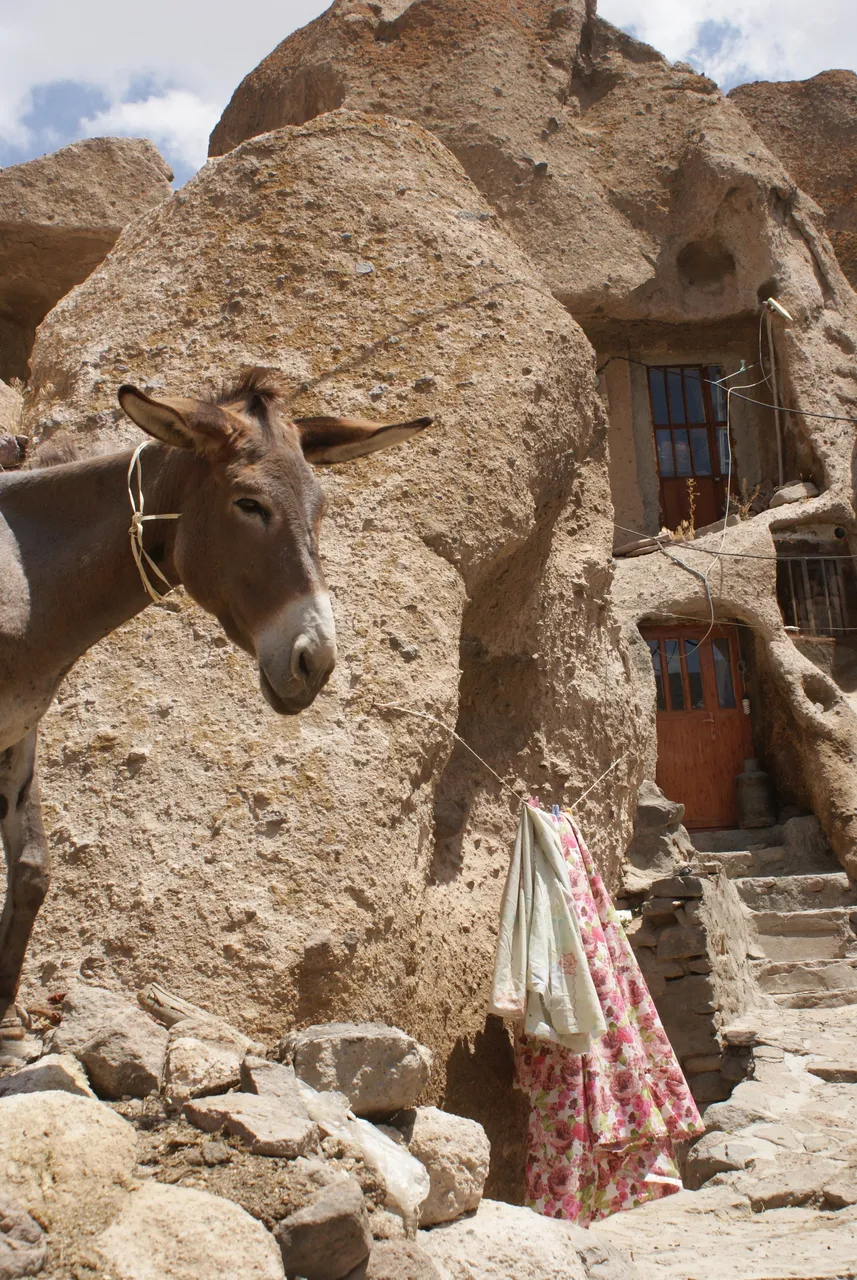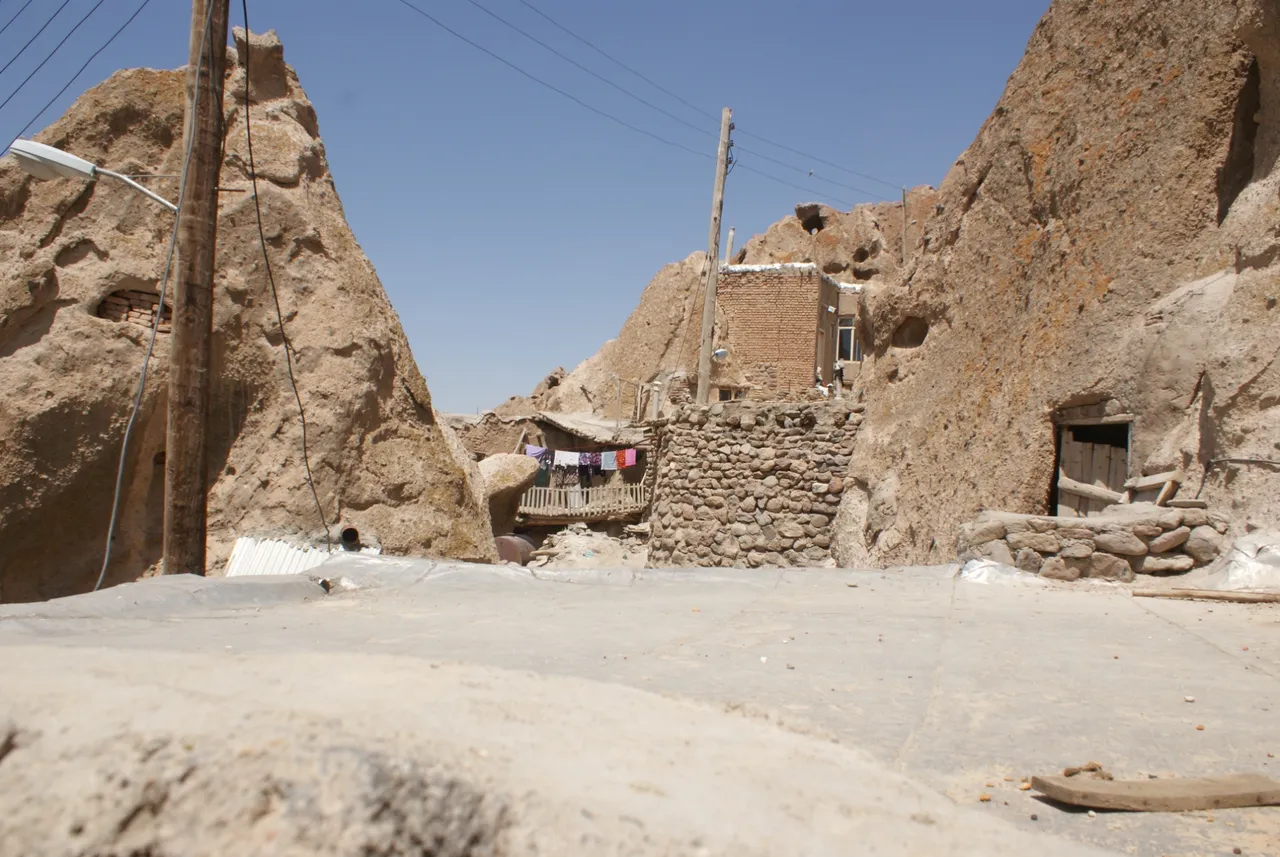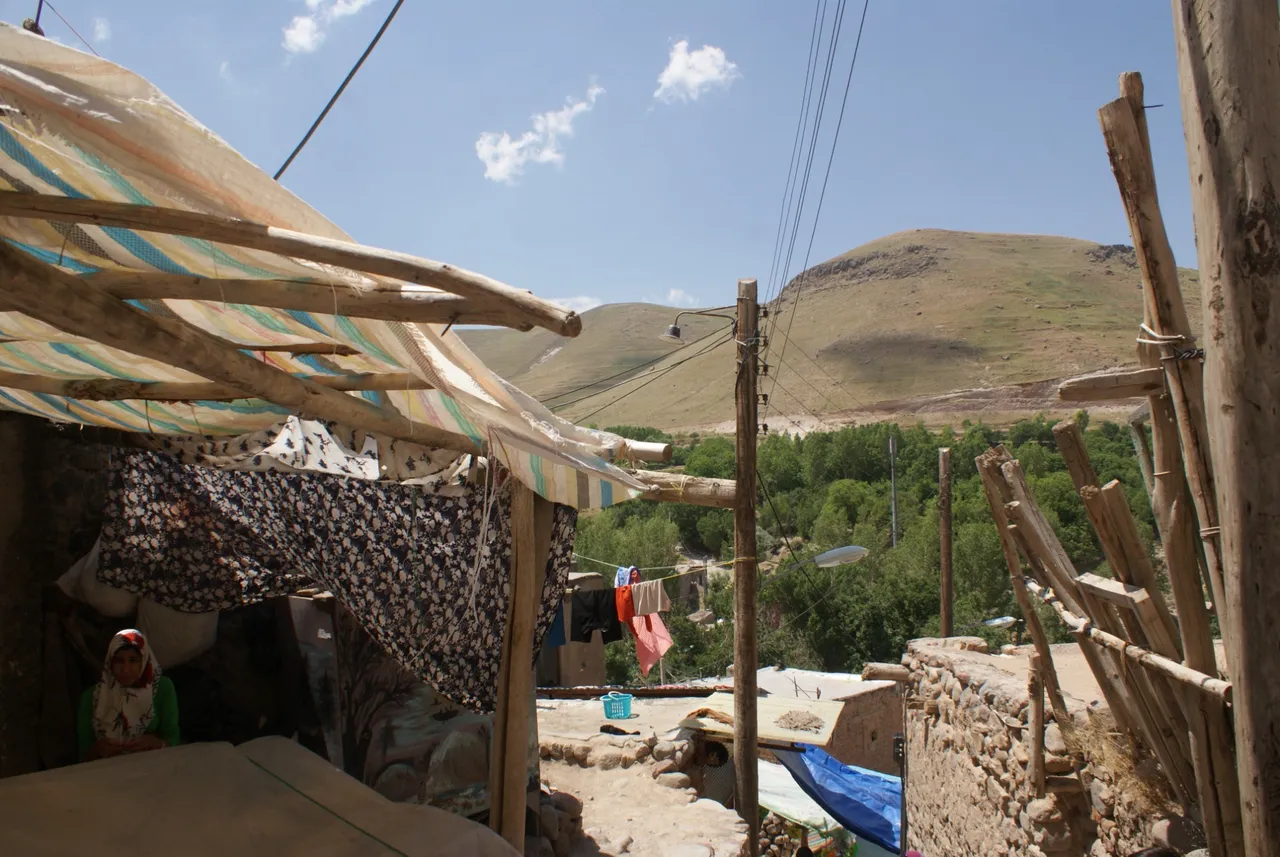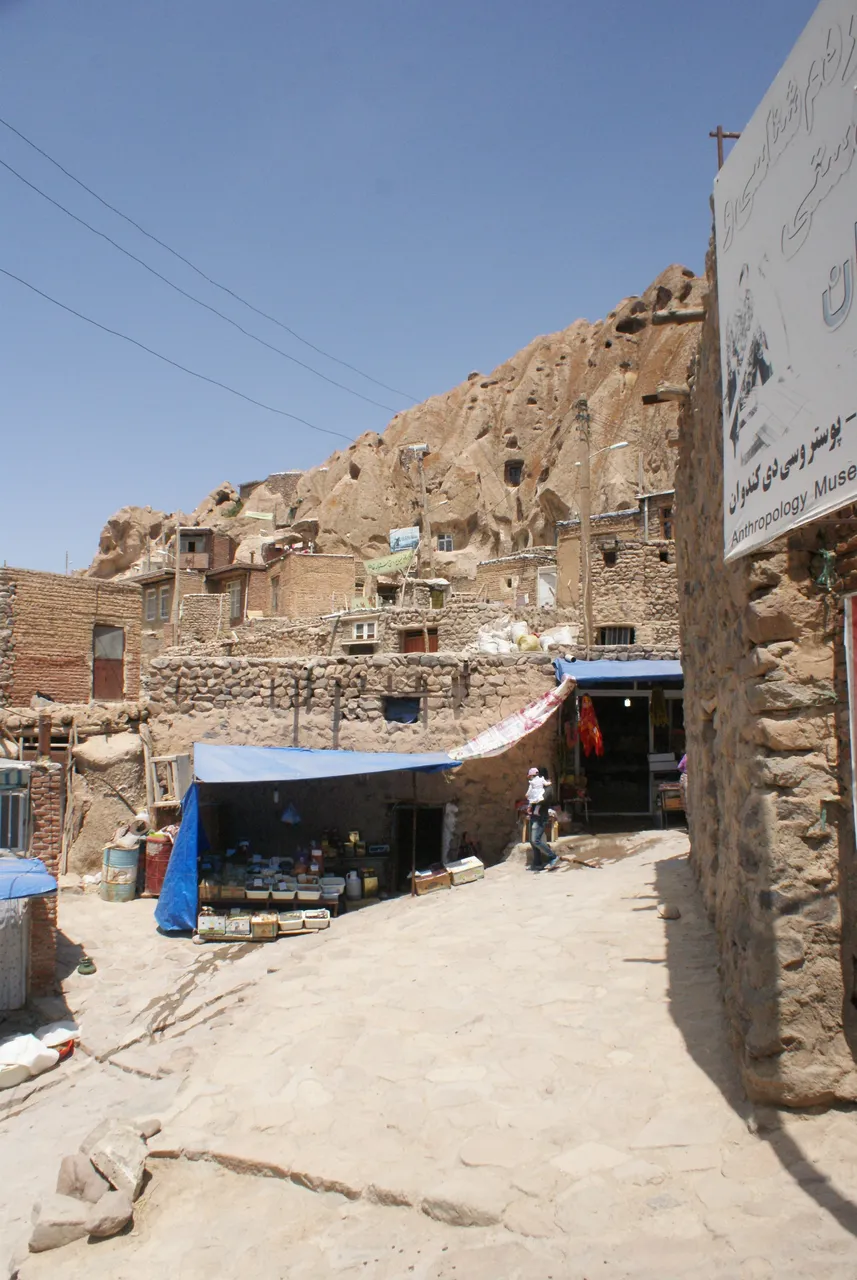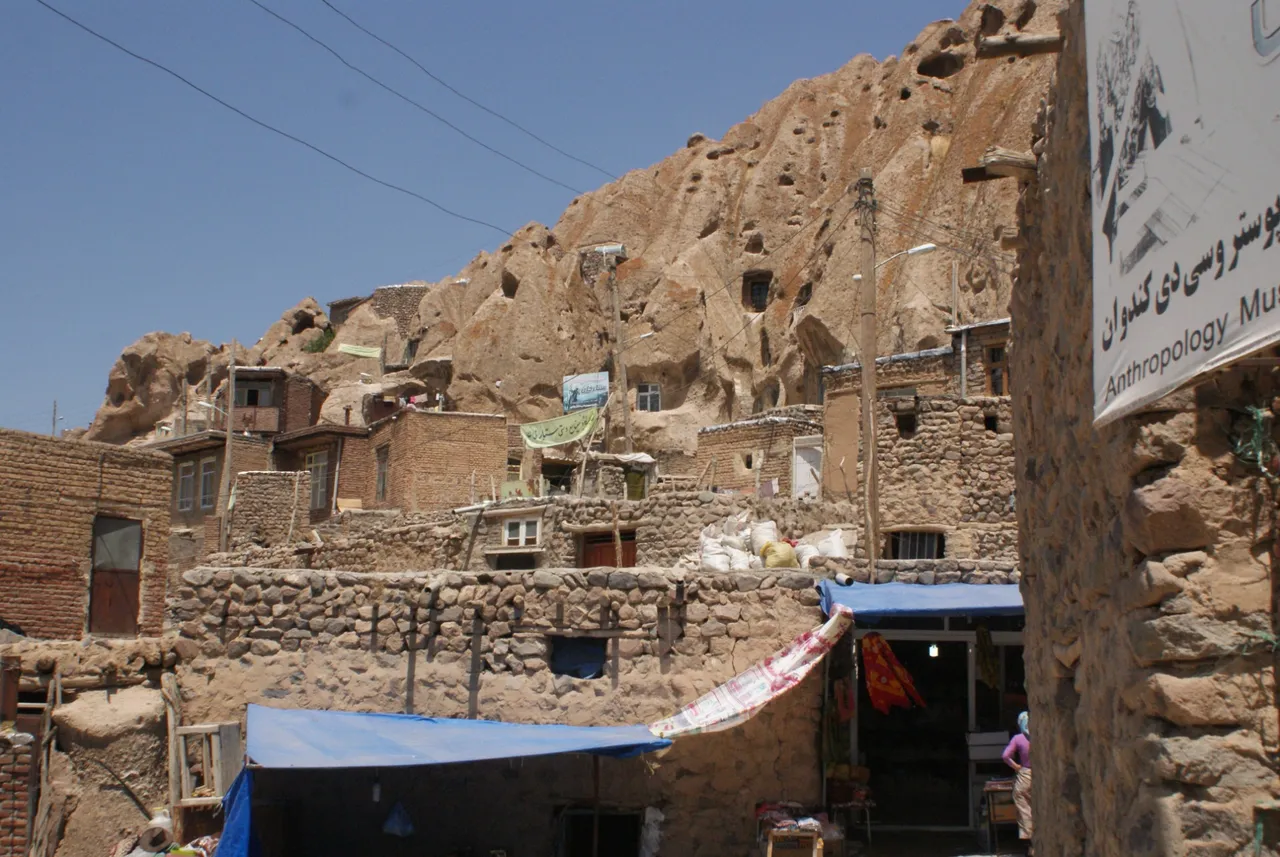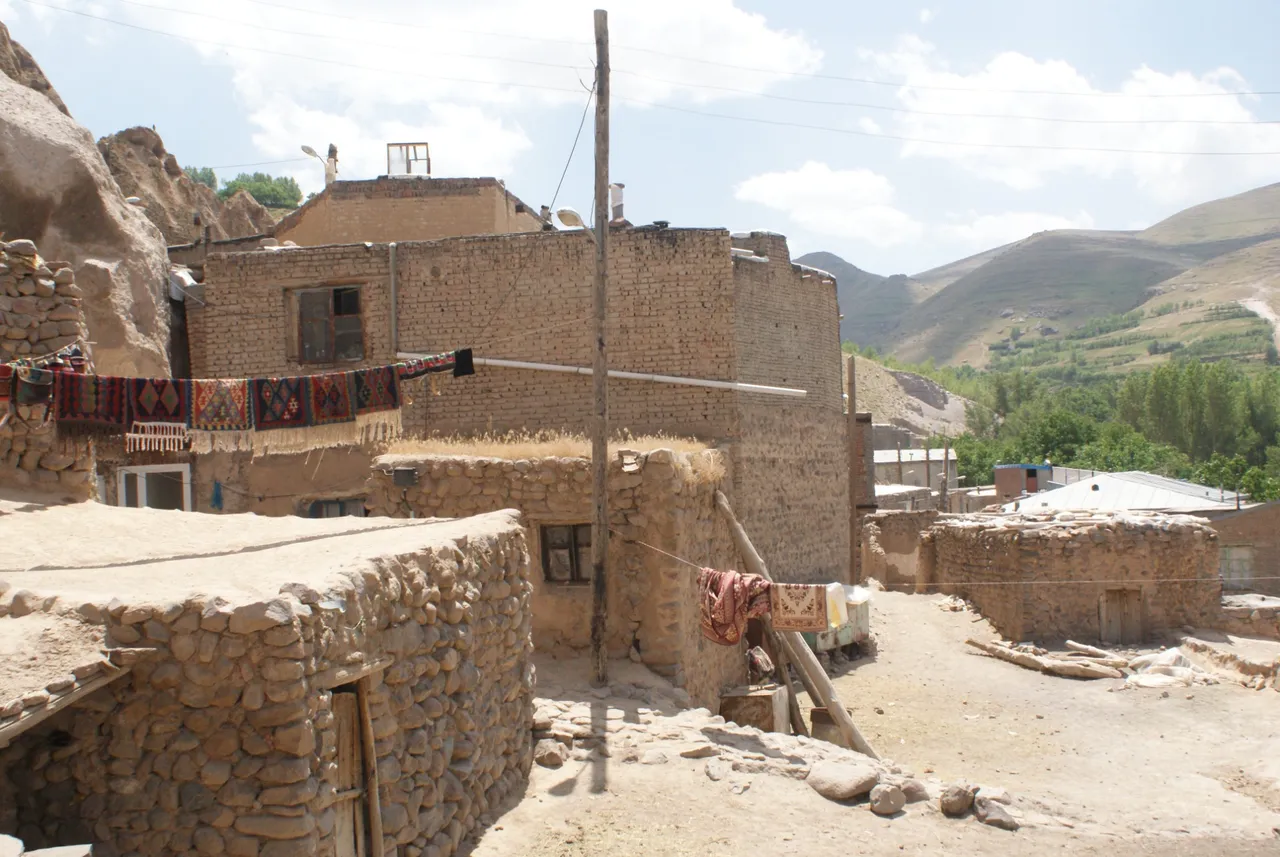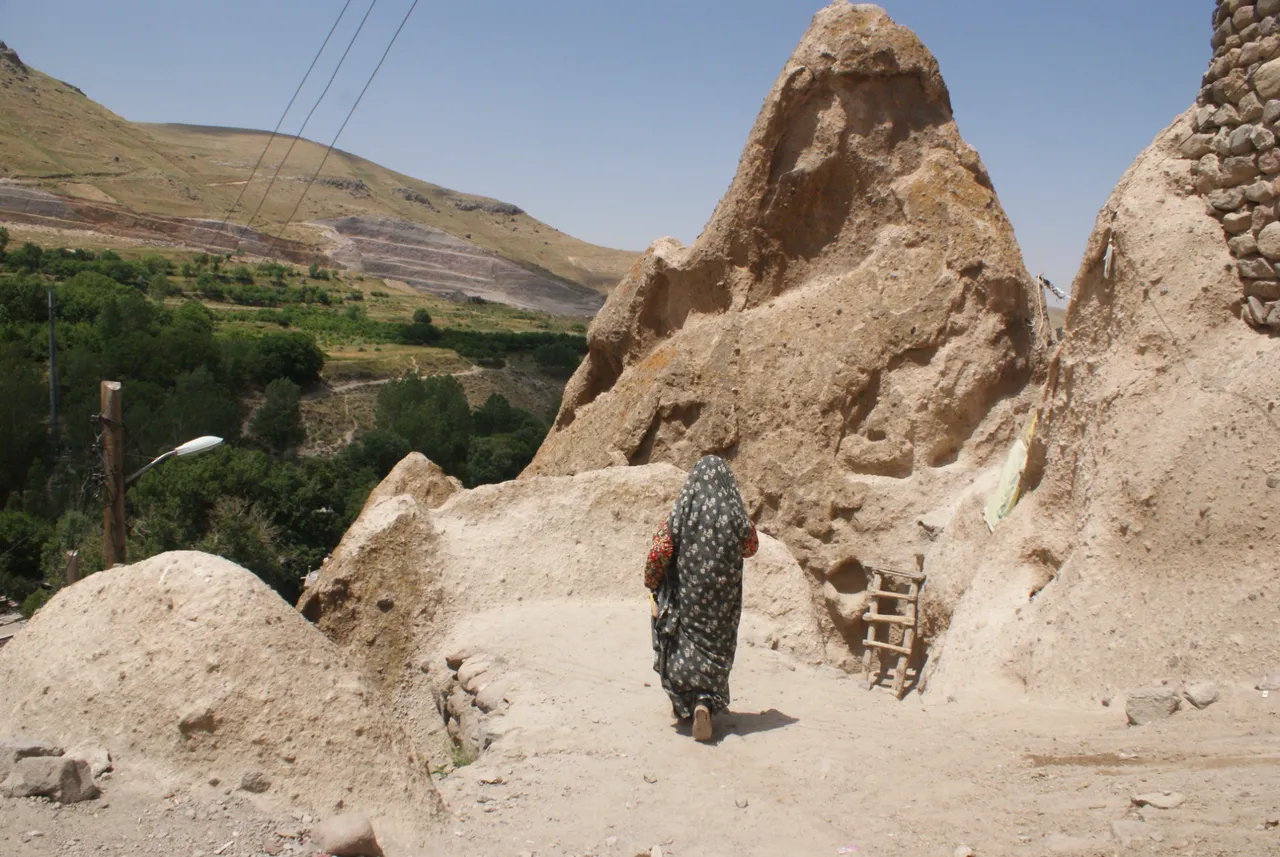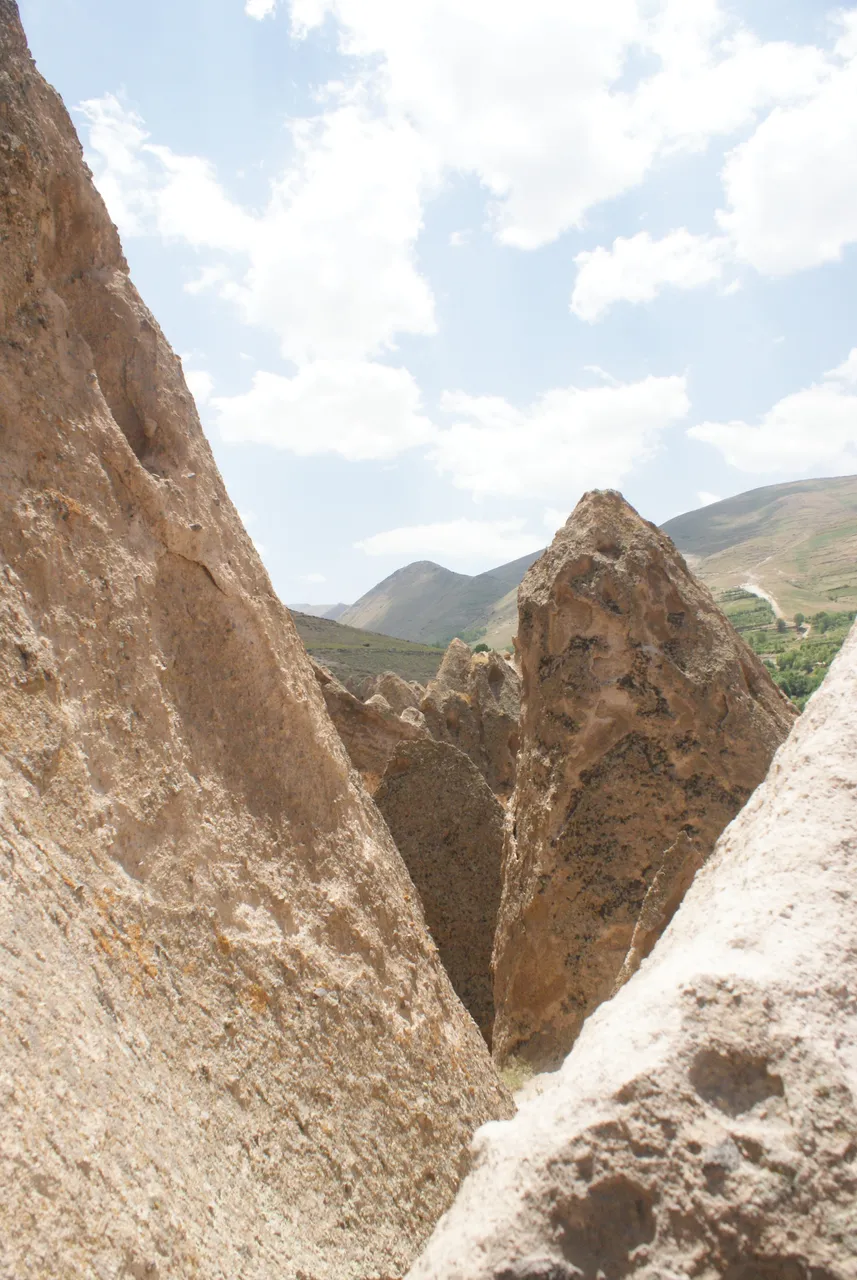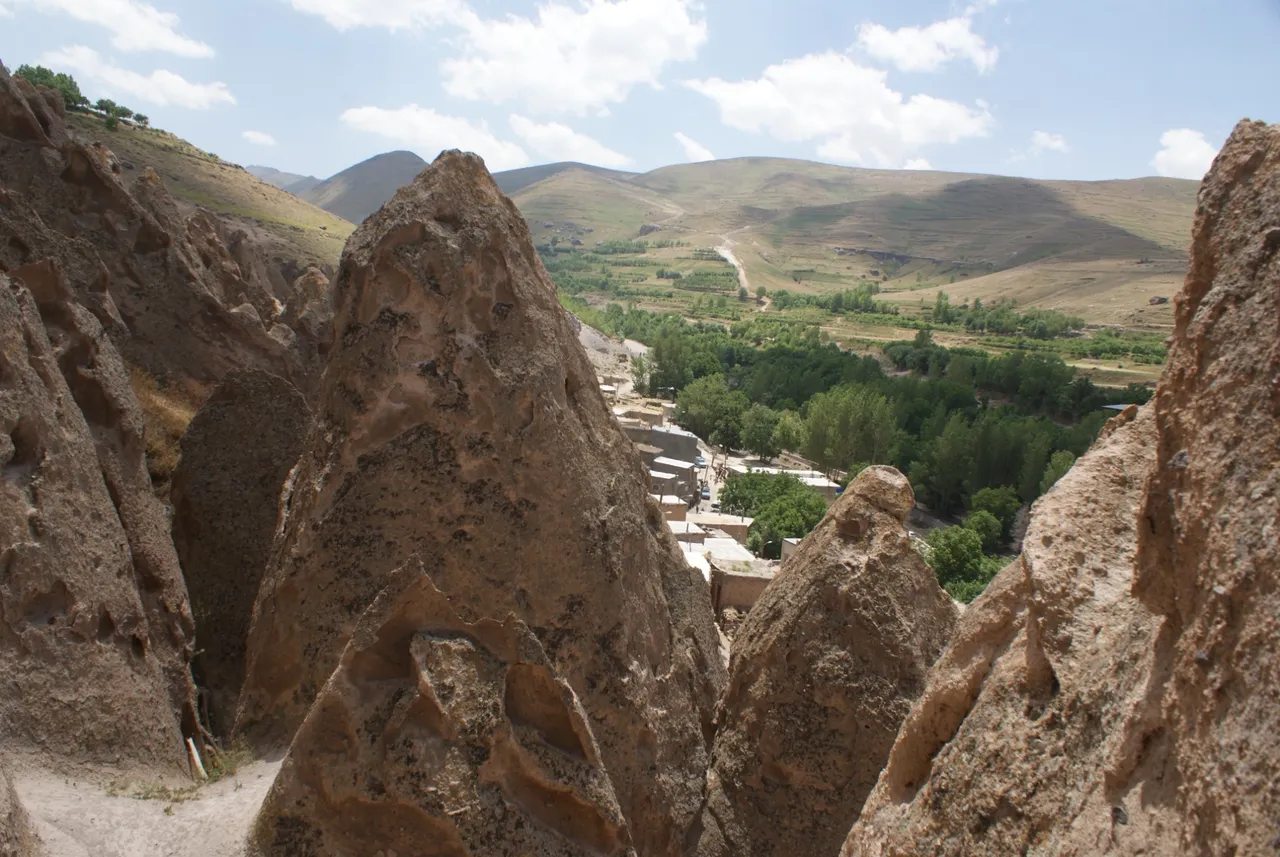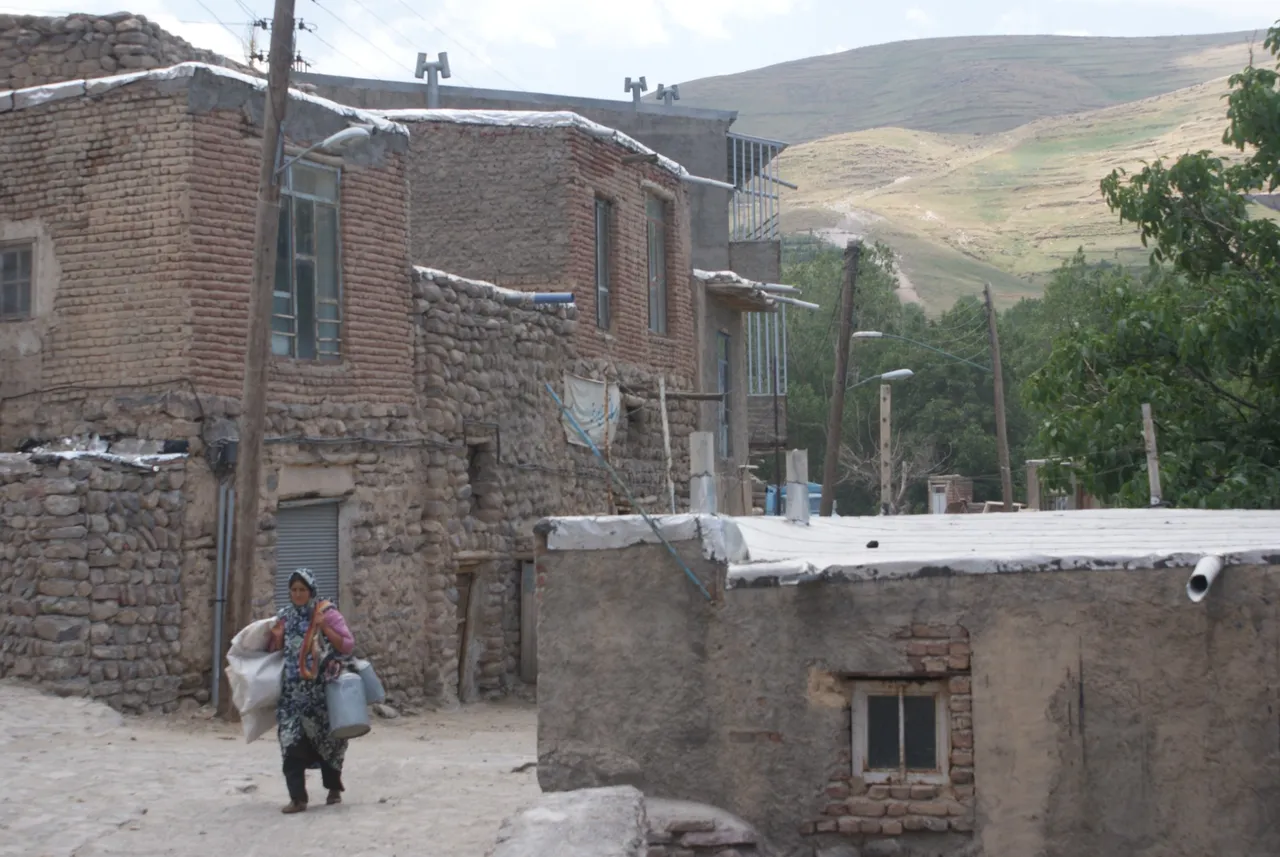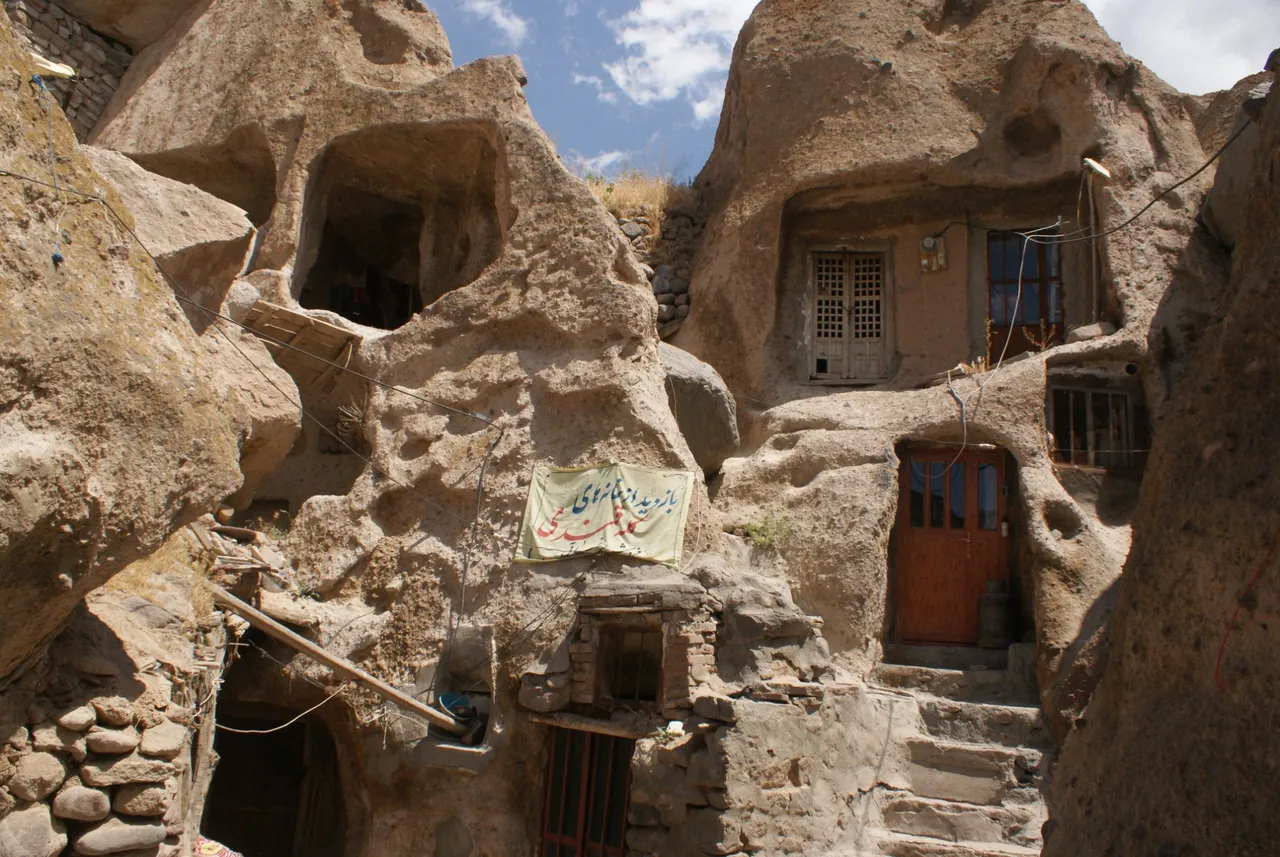
[ENG]
During our stay in Tabriz, we heard that not far from the city, about 30 kilometers to the south, there is a unique rock city called Kandovan. It is an ancient village located at the foot of the Sahand volcano. The Sahand volcano, 3,707 meters above sea level, is now inactive, and it spewed out all the ashes it was supposed to spew many years ago. The unusually thick layers of ash extracted from the volcano, up to 100 meters thick, began to erode over time, creating extremely characteristic rock formations resembling conical tents. People living in these territories discovered that these volcanic rocks are very soft and ideal for drilling rooms connected by corridors. In this way, a city in the rock was created here, an almost identical copy of what we can admire in Turkish Cappadocia. The oldest buildings preserved to this day are up to 700 years old. The inhabitants of Kandowan found shelter here from enemy invasions.
Rock houses are usually 2 to 4 storeys high, they do not have many windows, and those that do exist are very small. Farm animals are kept on the lower floors of the apartments, people live on the upper floors, and the attics are used as pantries. Inside the houses it is not very bright and there is not much space. The stairs between floors are steep and not very comfortable to walk on. The advantage of living in this town is that they are very good at maintaining a pleasant, cool, humid climate indoors, even during the hottest weather outside.
Currently, the village has about 170 families and a total population of 600 people. These people live mainly from tourism. Suffice it to mention that Kandovan is visited by 300,000 people annually, which translates into 500 tourists for every resident. Another important pillar supporting the local community is the production of really, really good honey, supposedly the best honey in Iran, which can be bought in almost every second home. Those who are not suitable for trade and are allergic to bee stings engage in agriculture, because the local lands are exceptionally fertile for Iran, and this is all due to the proximity of the Sahand volcano, which for many years fertilized the local soils with the entire Mendeleev table.
[PL]
W trakcie naszego pobytu w Tabriz usłyszeliśmy, że w niedalekiej odległości od miasta około 30 kilometrów na południe znajduje się unikalne na skalę światową skalne miasto Kandovan. Jest to starożytna wioska leżąca u podnóża wulkanu Sahand. Wulkan Sahand liczący 3,707 metrów nad poziomem morza obecnie jest już nieaktywny, a wszyskie popioły, które miał z siebie wypluć, wypluł już wiele lat temu. Niezwykłej grubości, bo sięgające aż 100 metrów grubości, warstwy popiołów wydobytych z wulkanu z czasem zaczęły erodować tworząc niezwykle charakterystyczne formacje skalne przypominające stożkowate namioty. Ludzie przebywających na tych terytoriach odkryli, że owe skały wulkaniczne są bardzo miękkie i idealnie nadają się do drążenia w nich pomieszczeń połączonych korytarzami. W ten sposób powstało tutaj miasto w skale, niemal identyczna kopia tego co możemy podziwiać w Tureckiej Kapadocji. Najstarsze zachowane do dzisiaj budowle liczą nawet 700lat. Mieszkańcy Kandowan znaleźli tutaj schronienie przez najazdami nieprzyjaciół.
Skalne domy liczą zazwyczaj od 2 do 4 kondygnacji, nie posiadają zbyt wielu okien, a te które już są , są bardzo małe. Na dolnych piętrach mieszkań trzymane są zwierzęta hodowlane, na wyższych piętrach mieszkają ludzie, a poddasza przeznaczone są na spiżarnie. Wewnątrz domostw nie jest zbyt jasno, i nie ma tam za wiele przestrzeni. Schody pomiędzy kondygnacjami są strome i niezbyt wygodne do chodzenia. Plusem mieszkania w tym miasteczku jest to, że bardzo dobrze potrafią zachować przyjemny chłodny, wilgotny klimat w pomieszczeniach, nawet podczas największych upałów na panujących na zewnątrz.
Obecnie wieś ma około170 rodzin i sumaryczna liczbę mieszkańców wynosząca 600 osób. Ludzie Ci żyją głównie z turystyki. Wystarczy wspomnieć o tym, że rocznie Kandovan jest odwiedzane przez 300000 ludzi, co przekłada się 500 turystów na każdego mieszkańca. Kolejnym ważnym filarem podtrzymującym tutejszą społeczność jest produkcji naprawdę bardzo dobrego miodu, ponoć najlepszy miód w Iranie, który można tutaj kupić w niemal co drugim domu. Ci którzy nie nadają się do handlu, oraz maja uczulenie na jad pszczół zajmują się rolnictwem, ponieważ tutejsze ziemie są jak na Iran wyjątkowo żyzne, a to wszystko na skutek sąsiedztwa z wulkanem Sahand, który przez długie lata użyźniał tutejsze gleby całą tablicą Mendelejewa.

